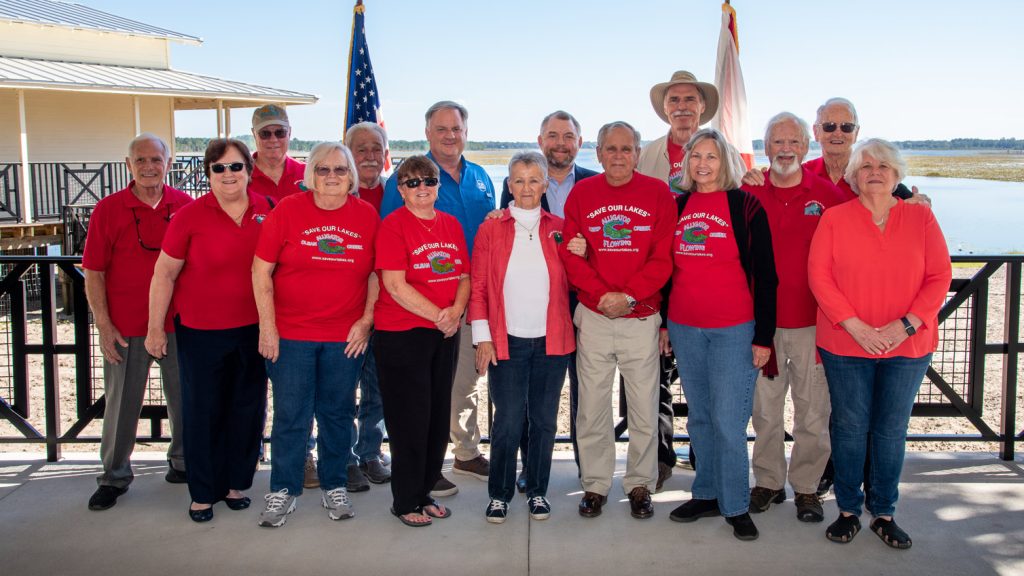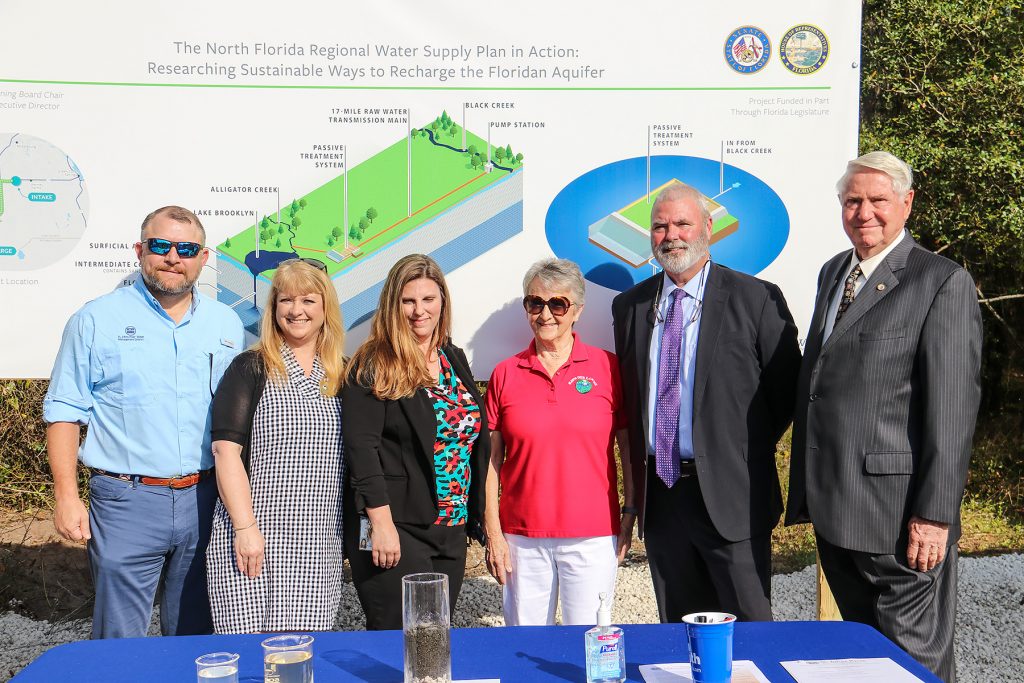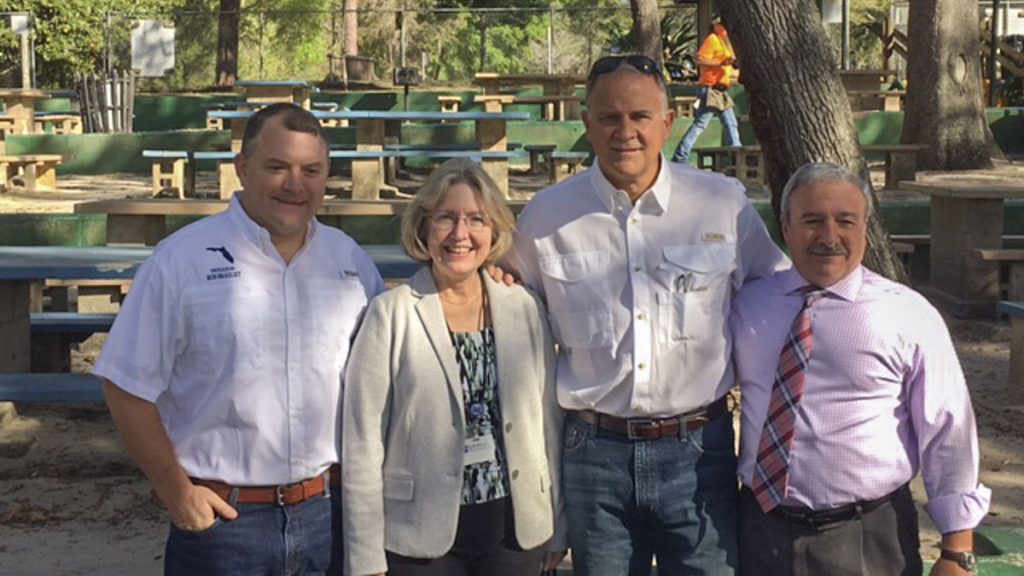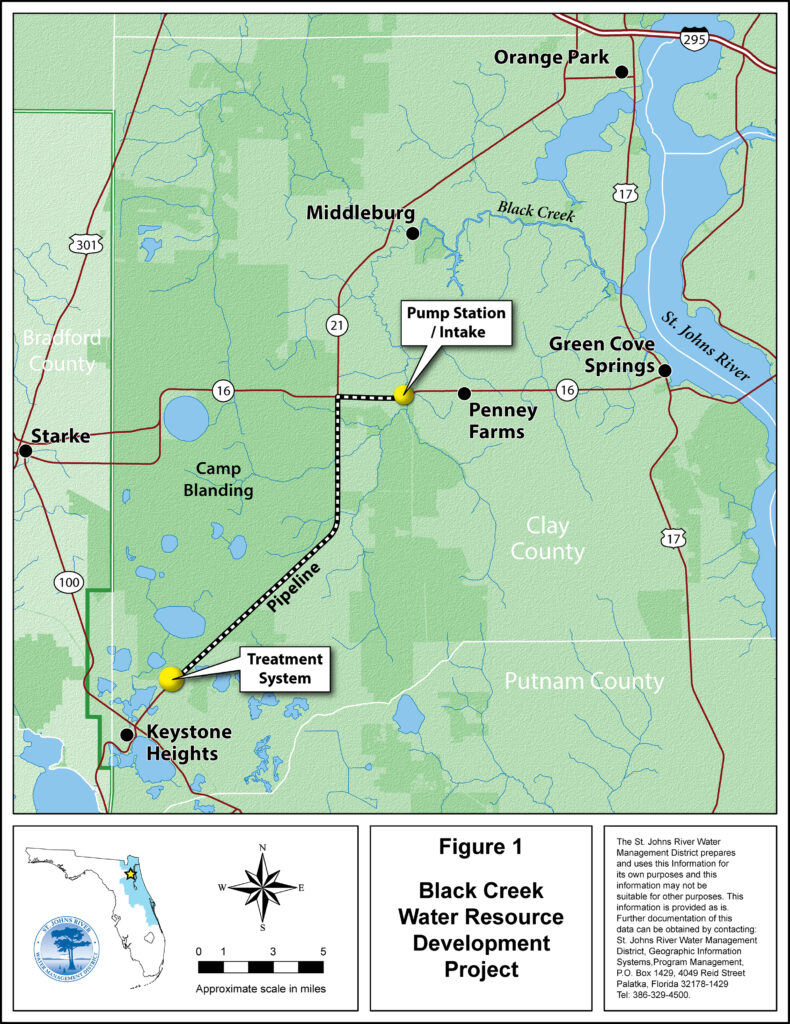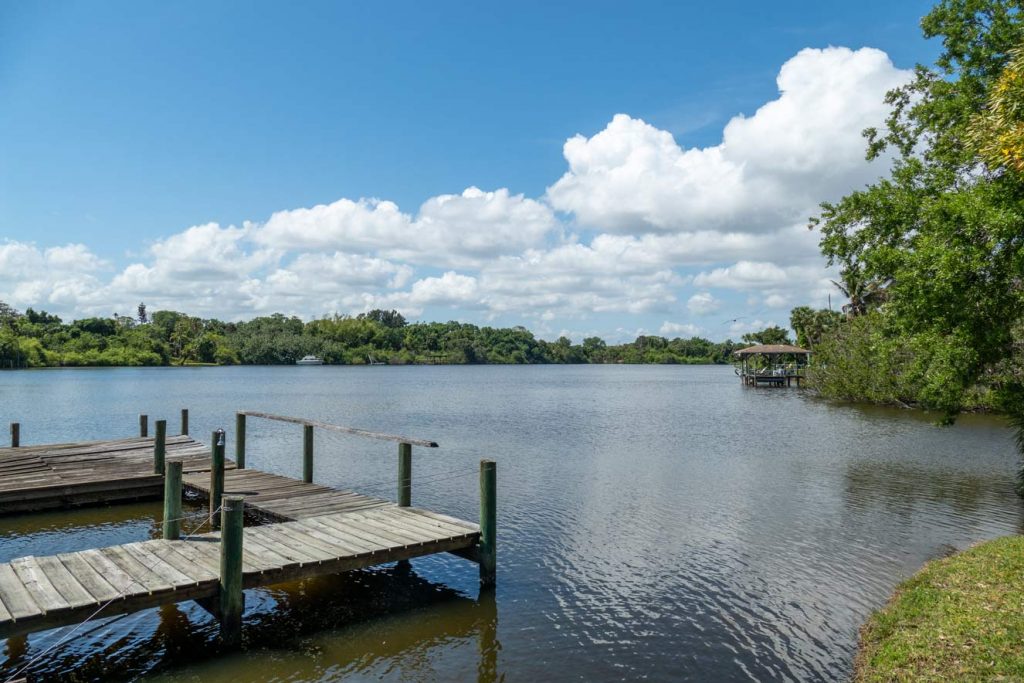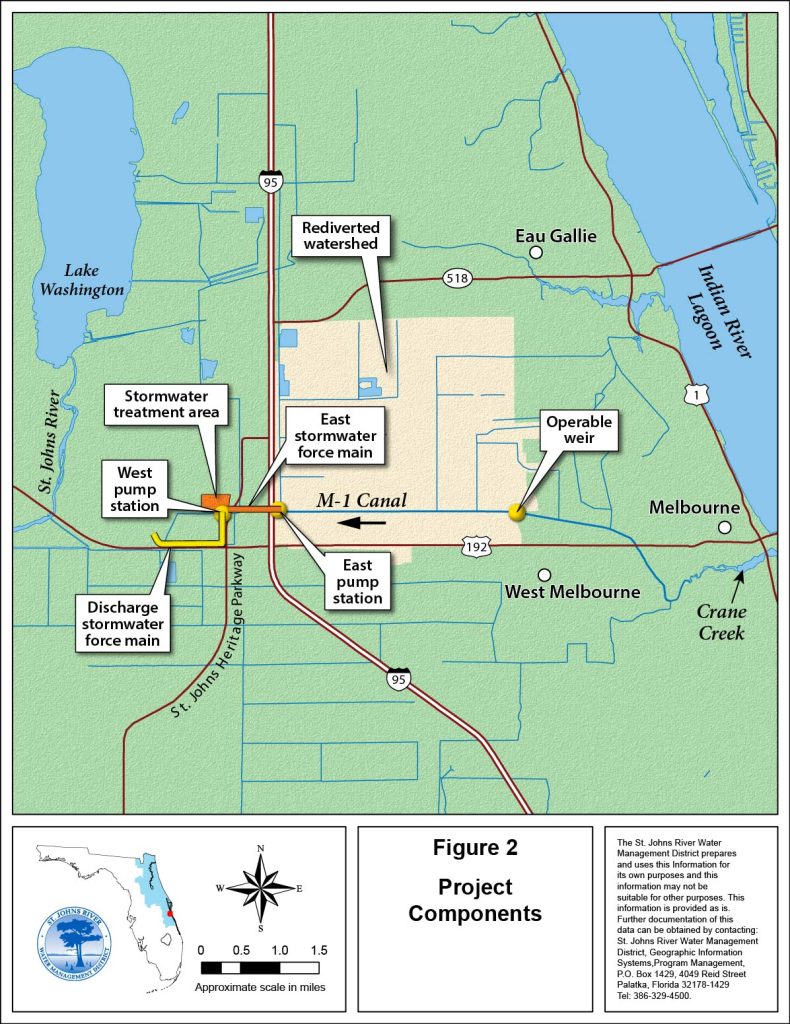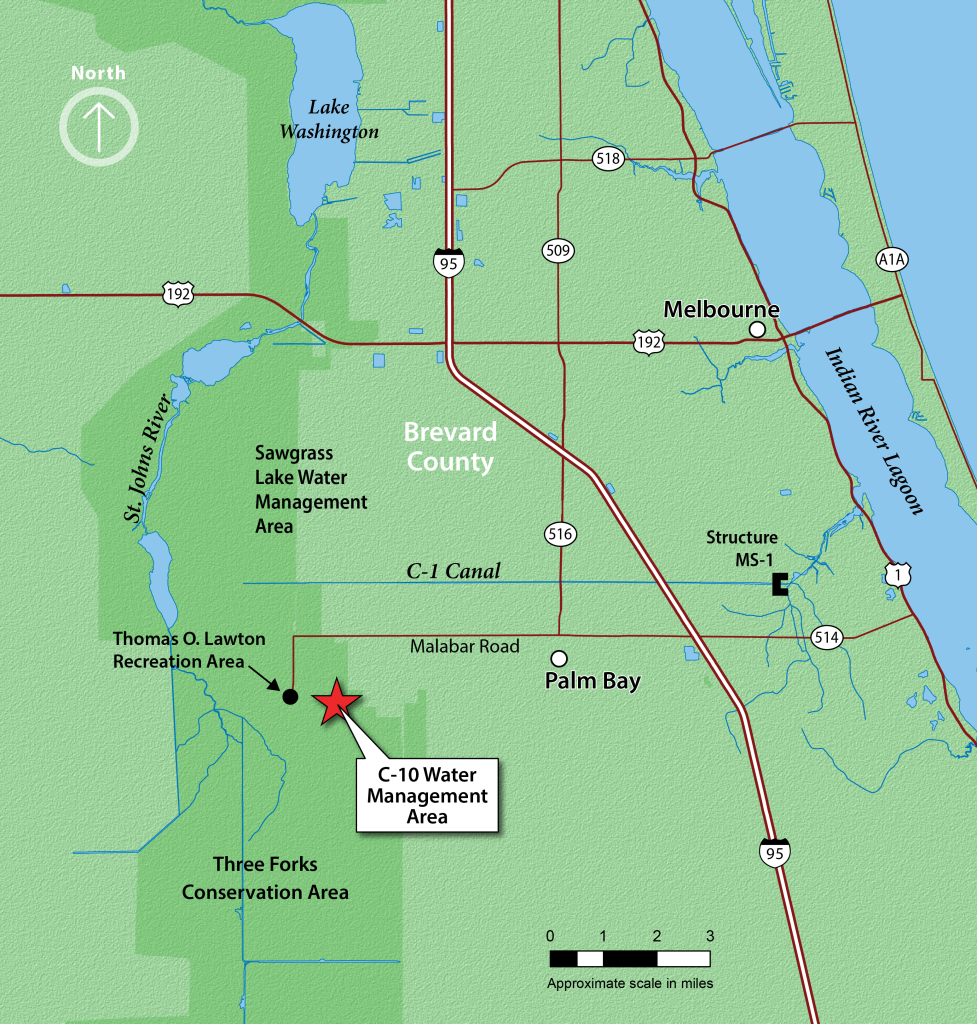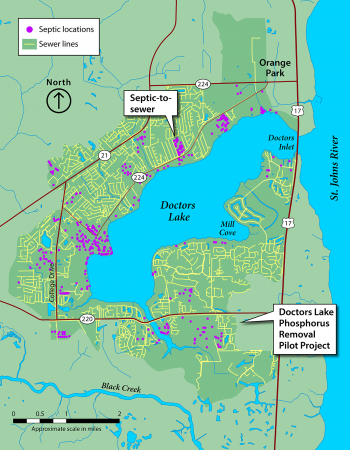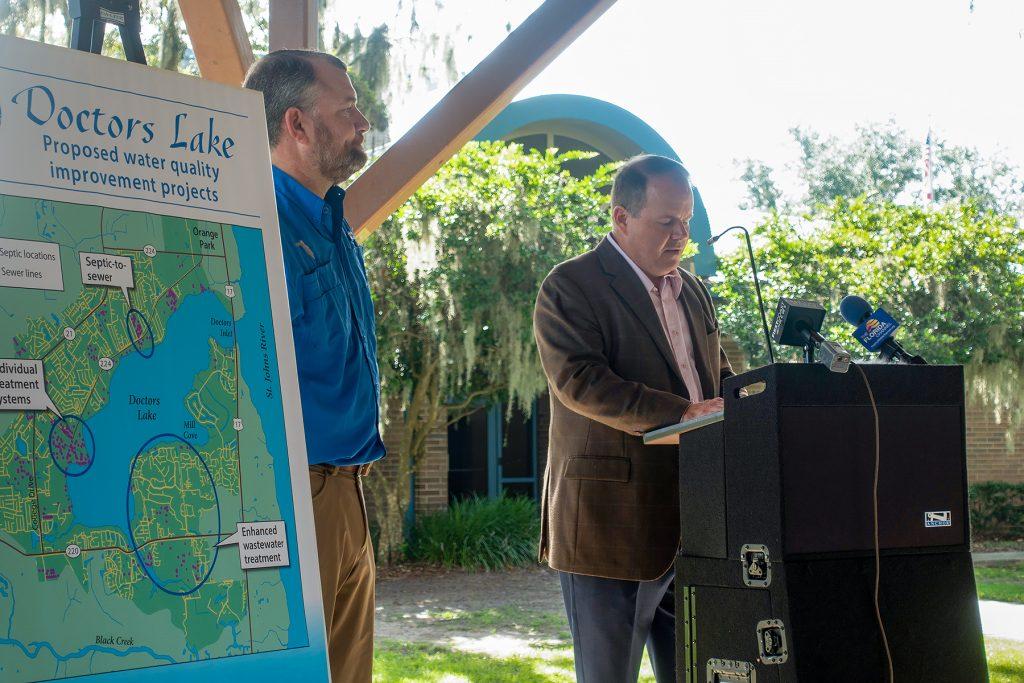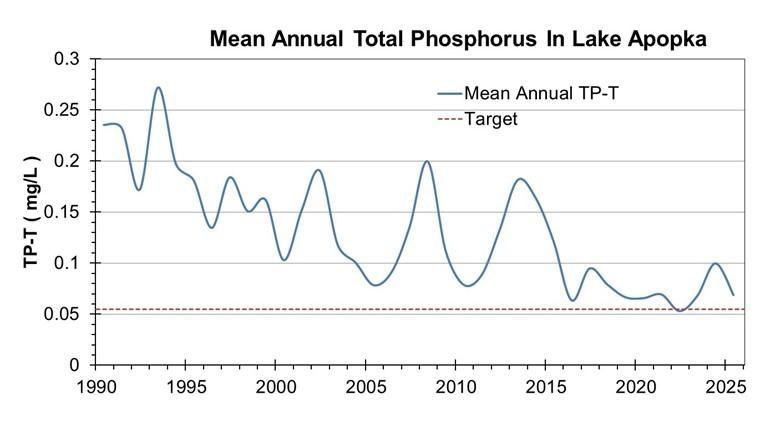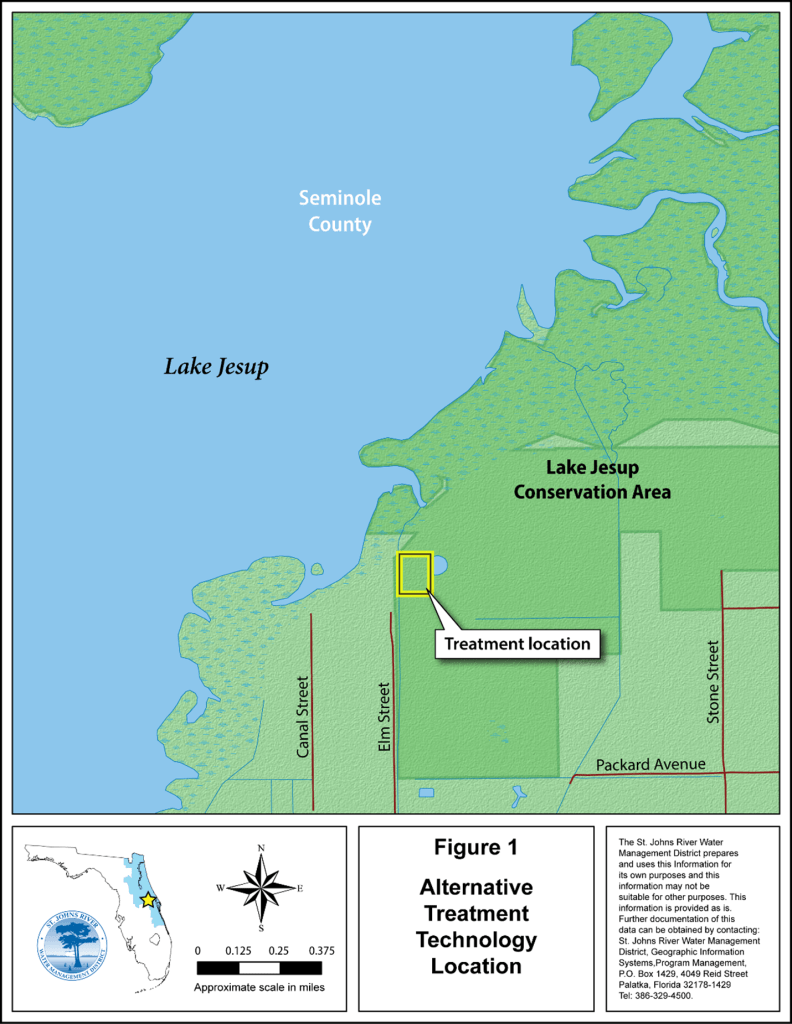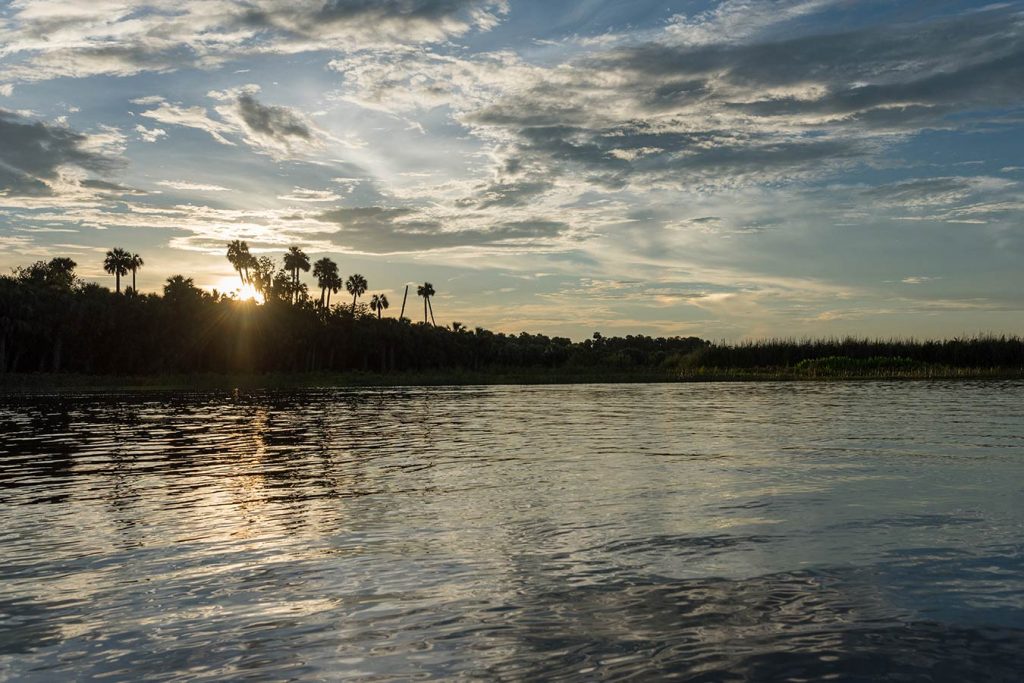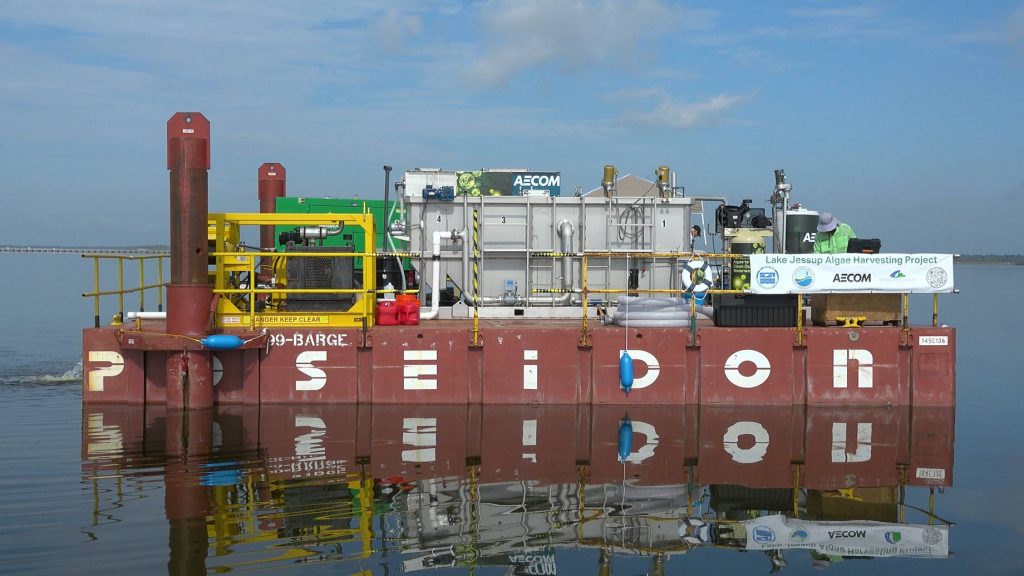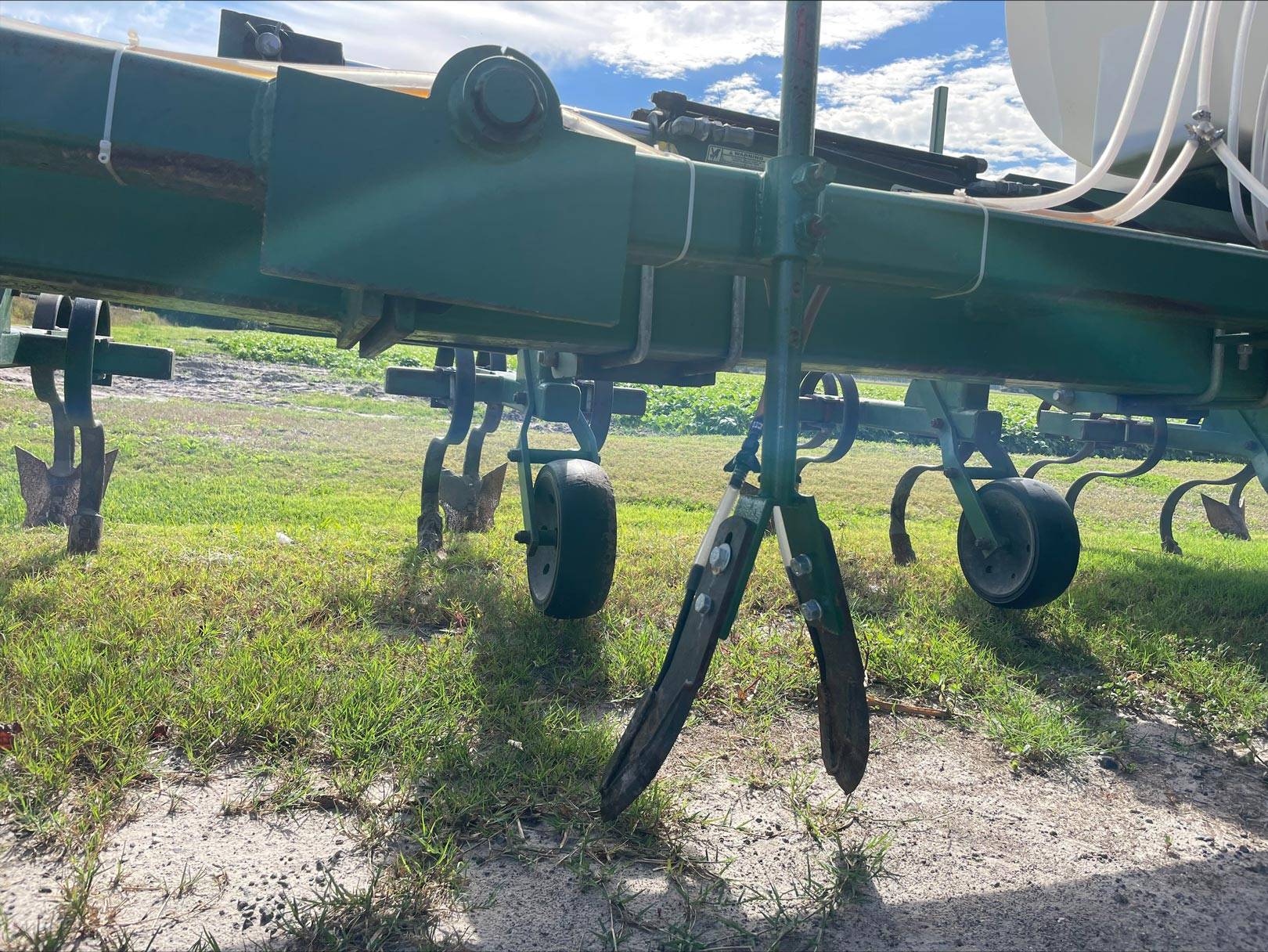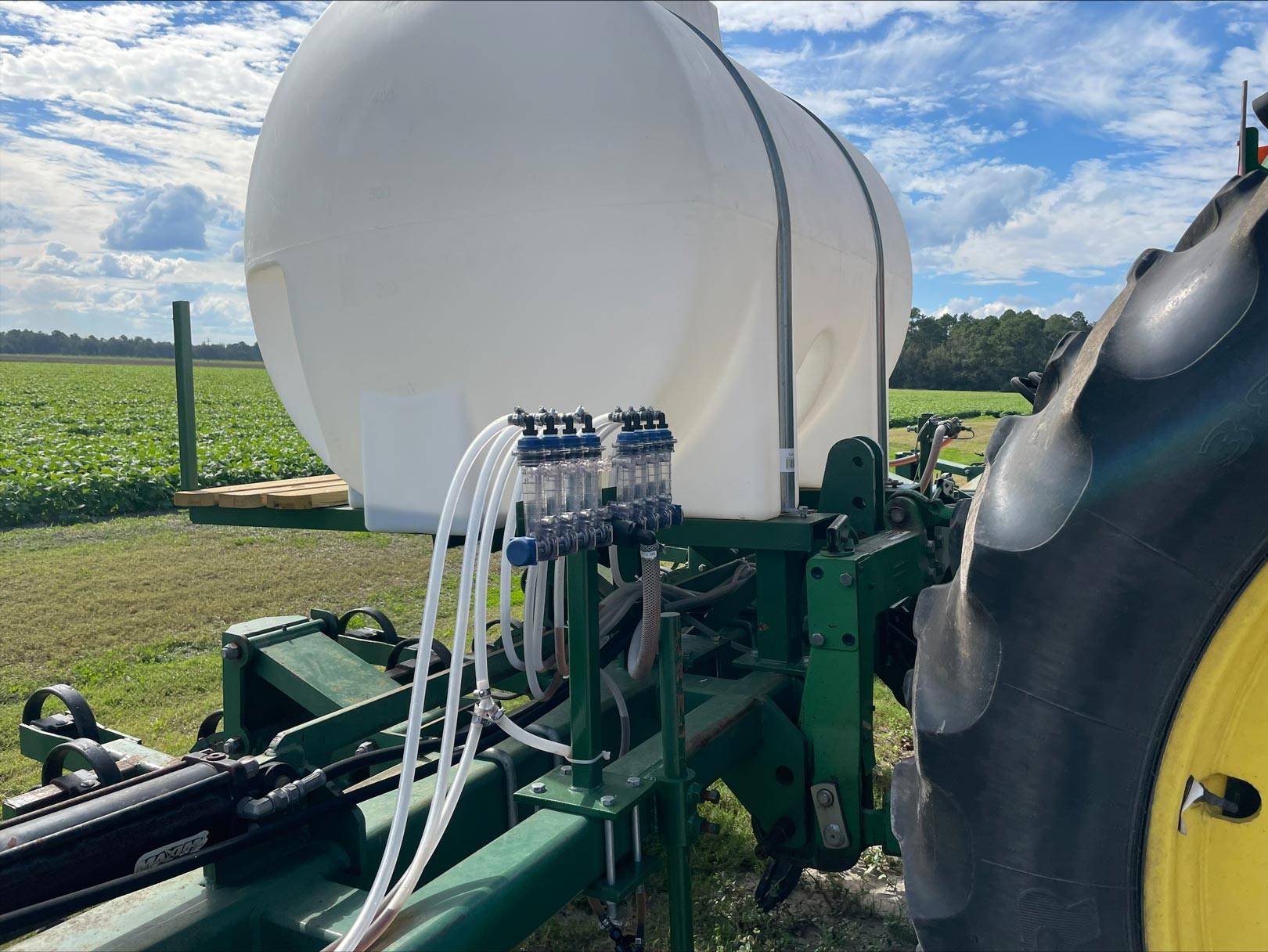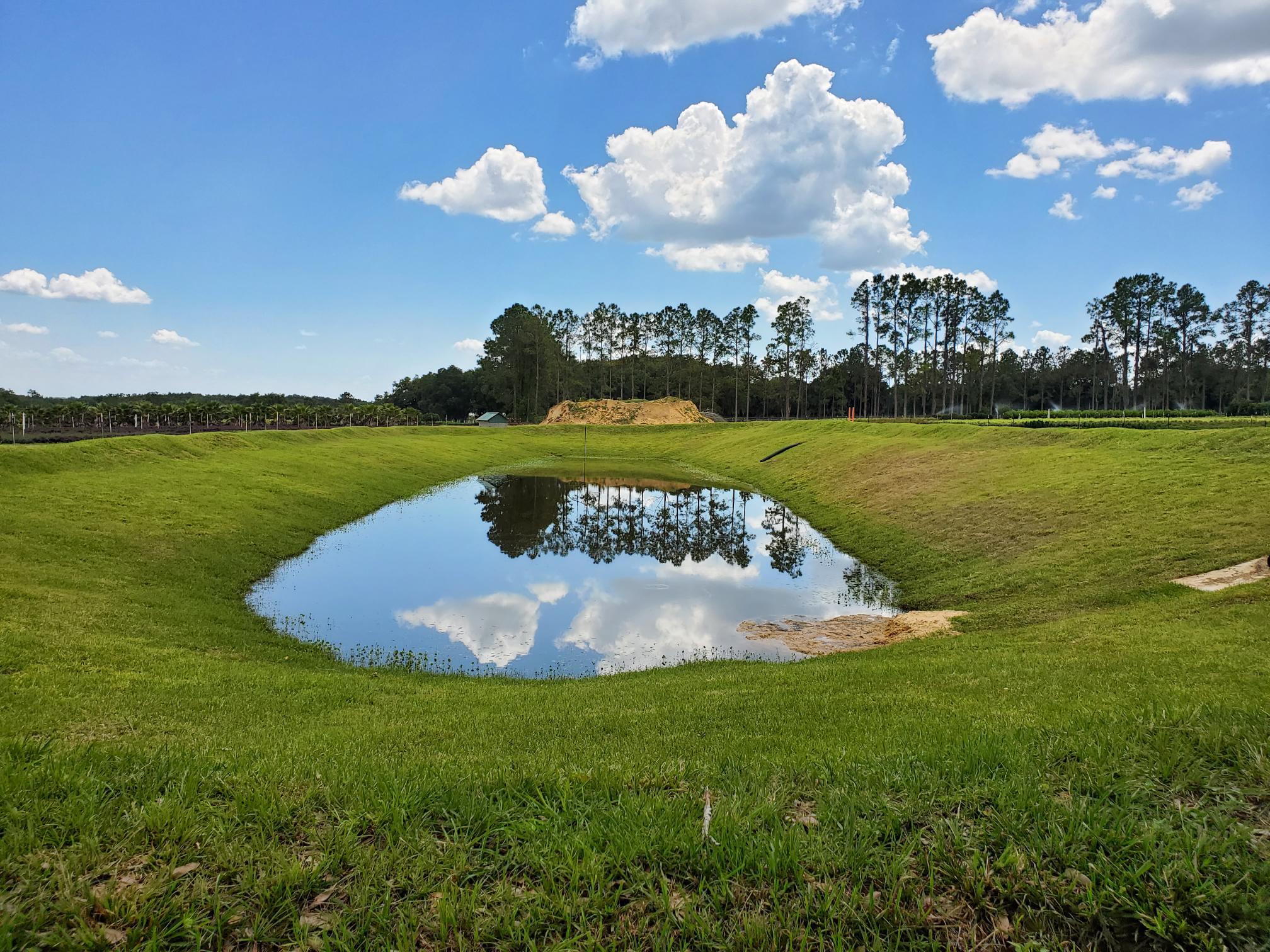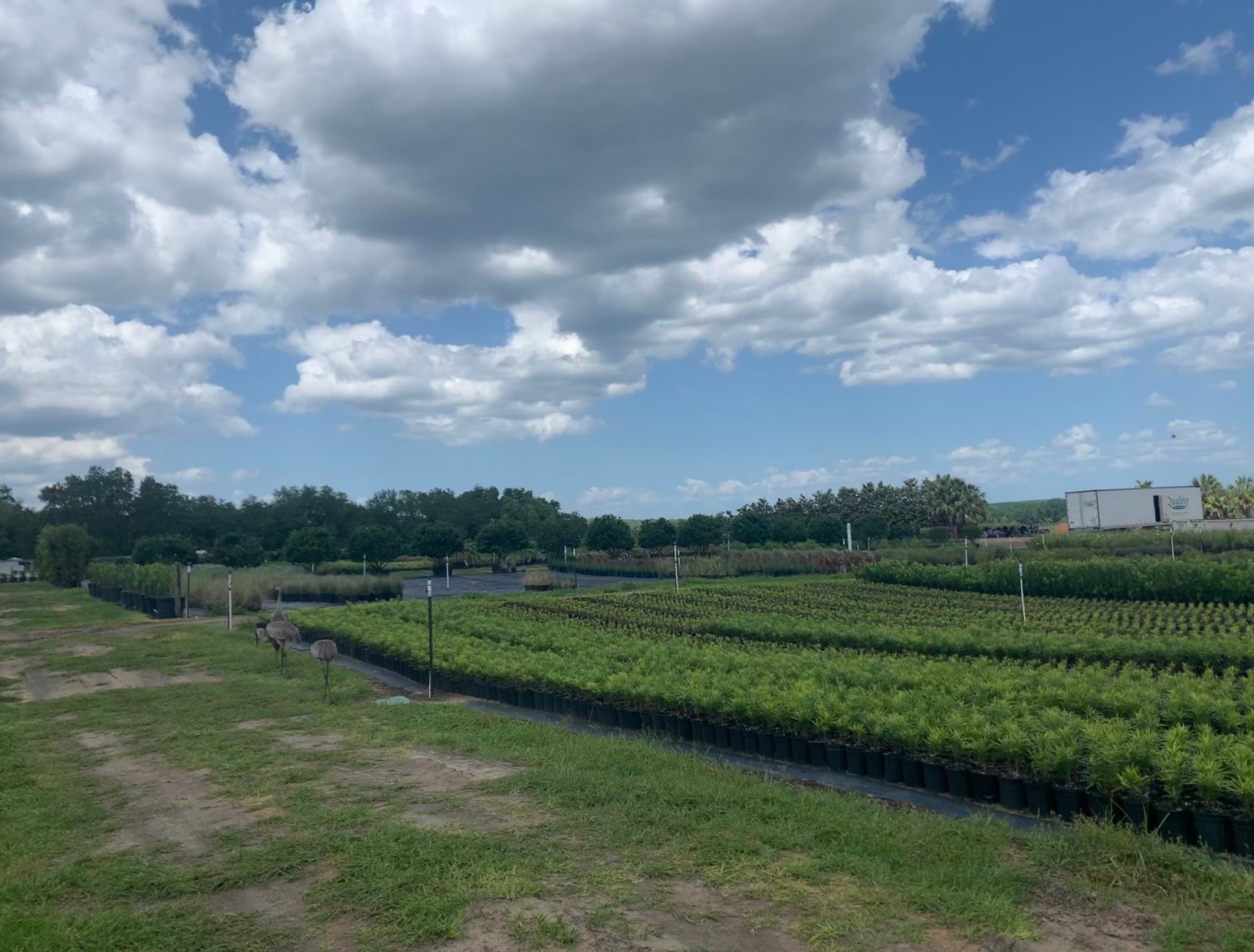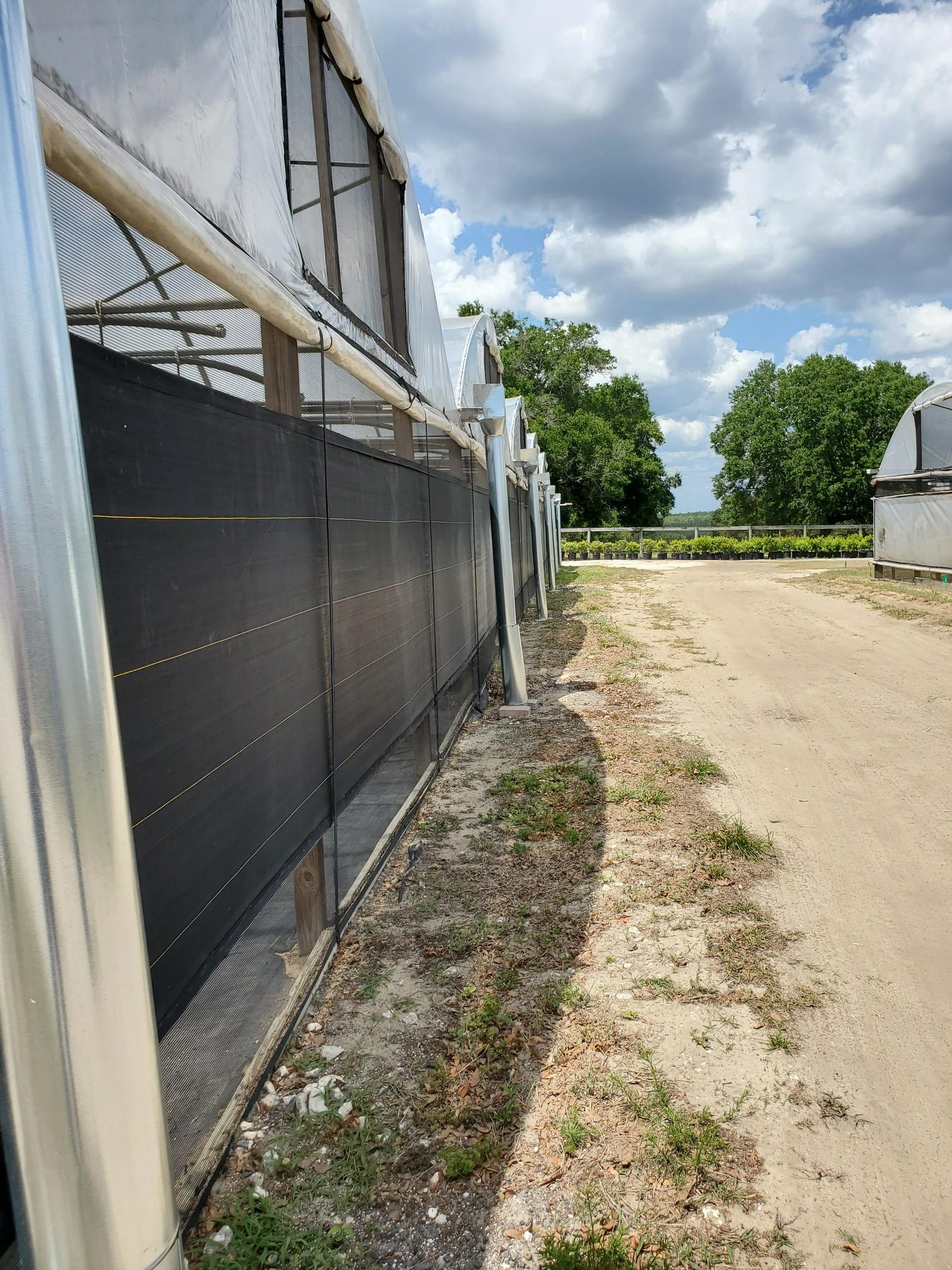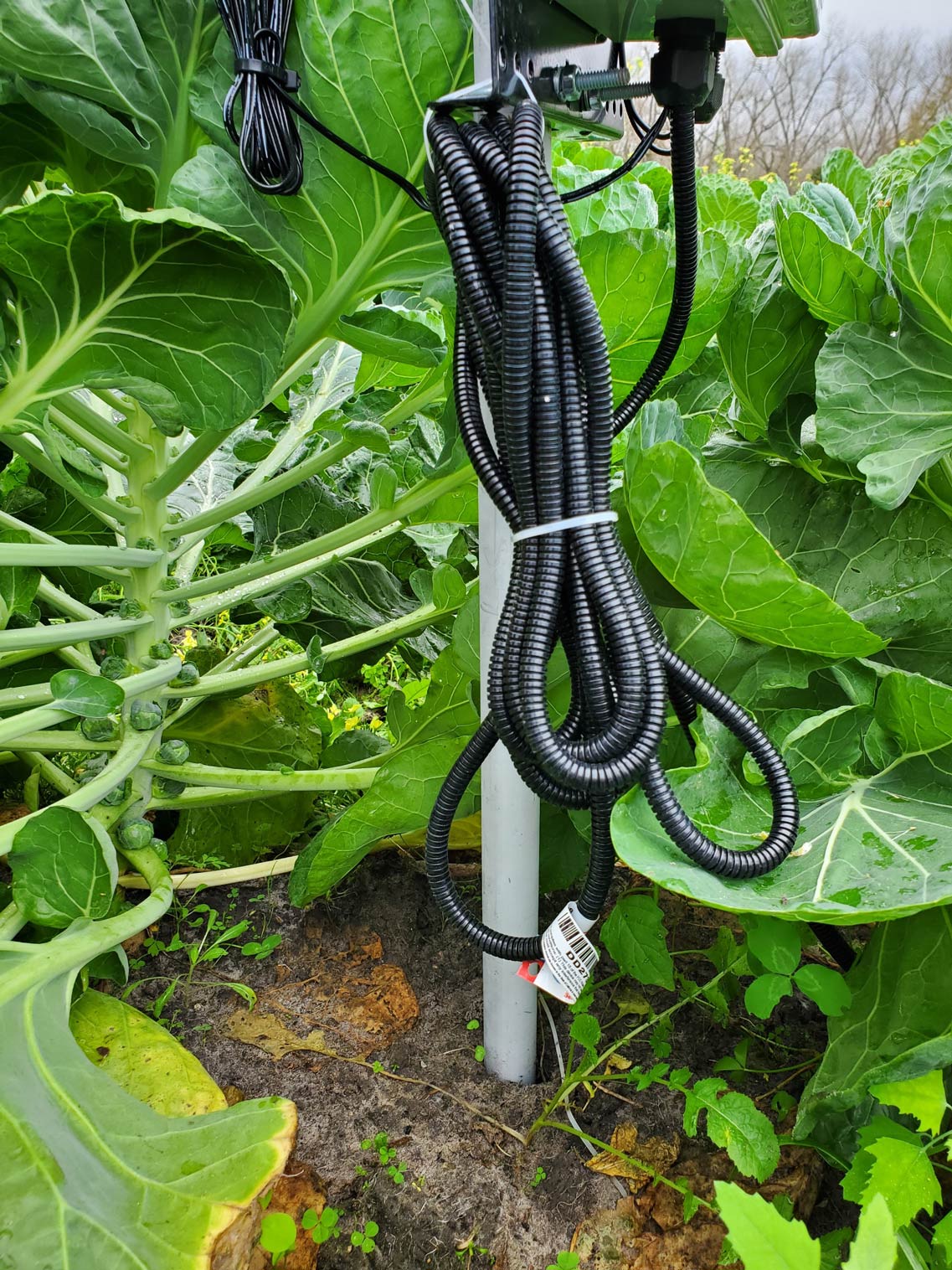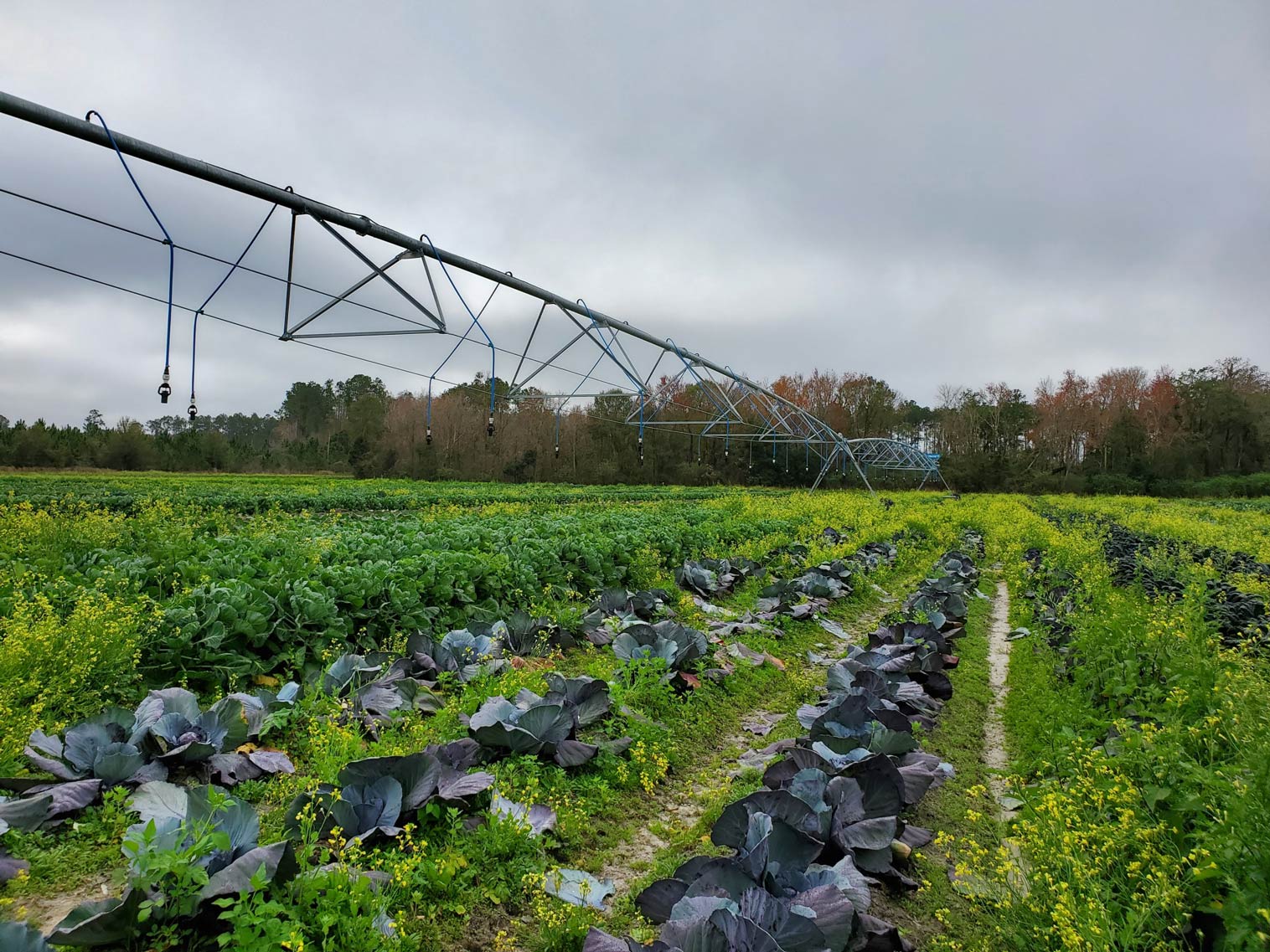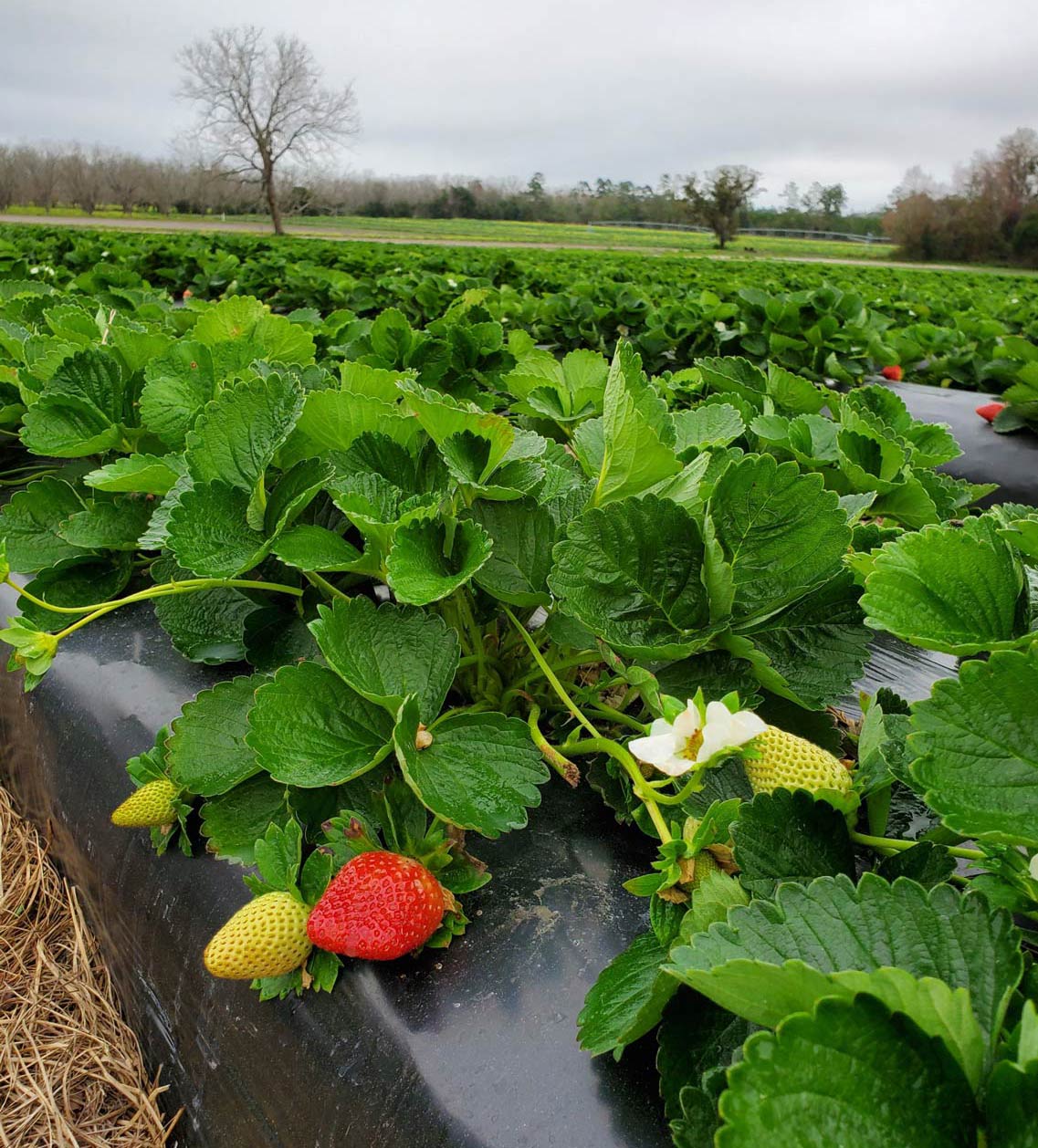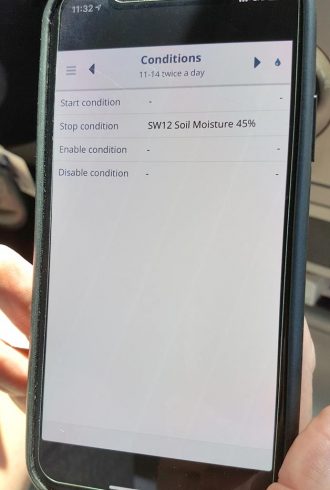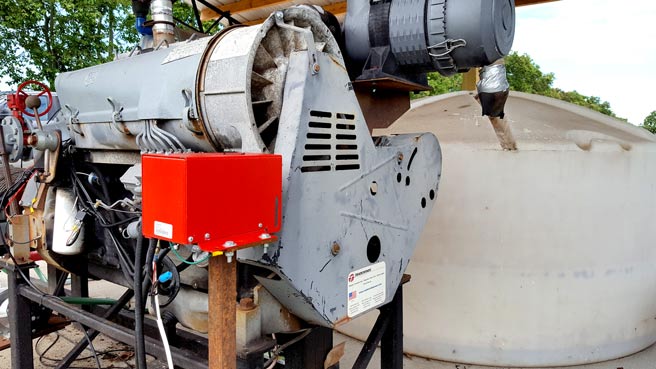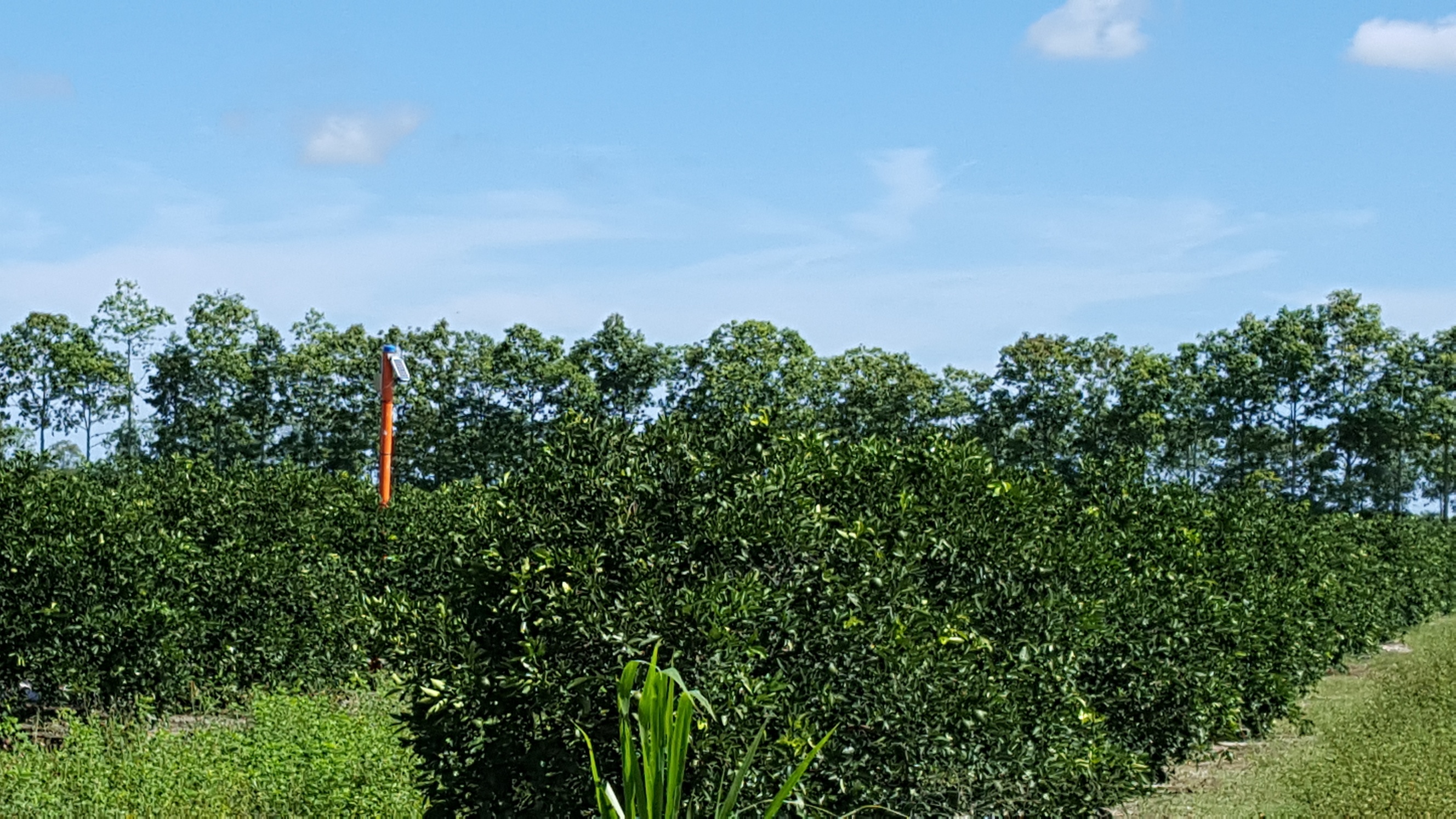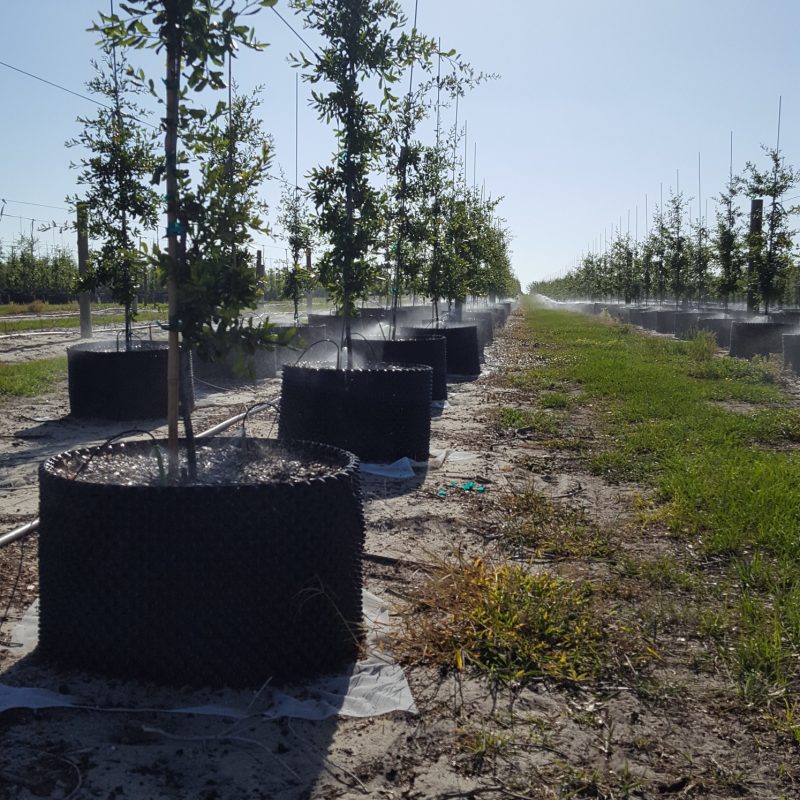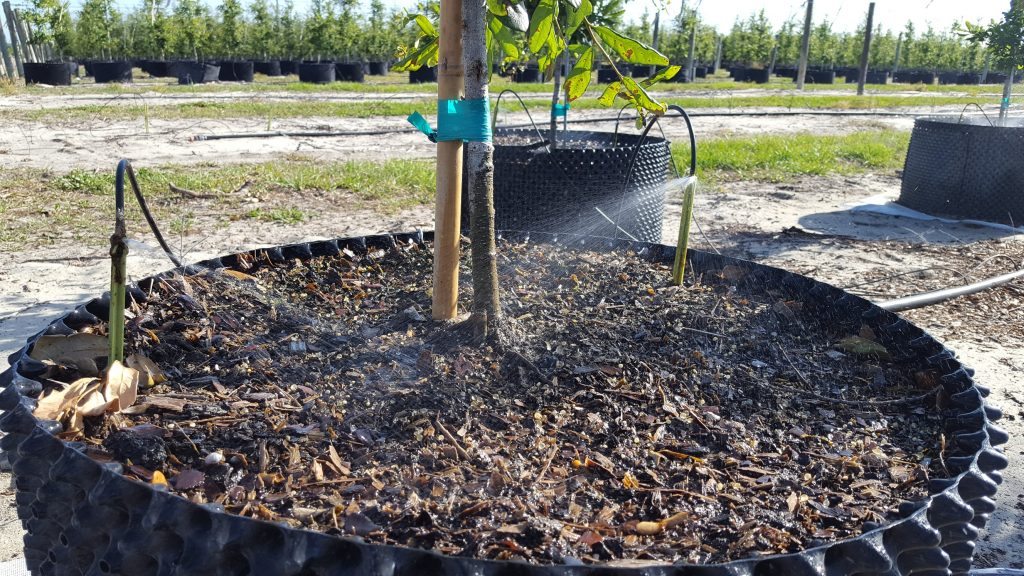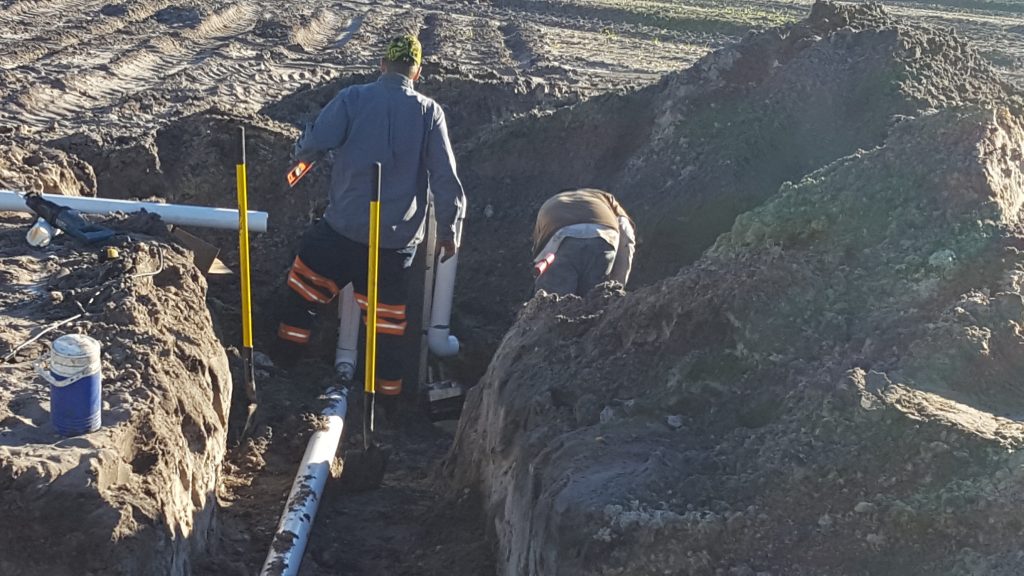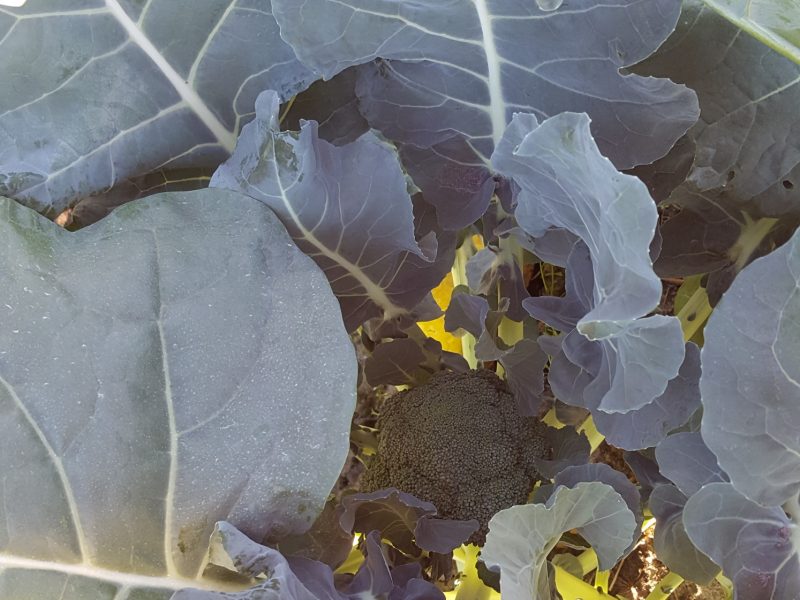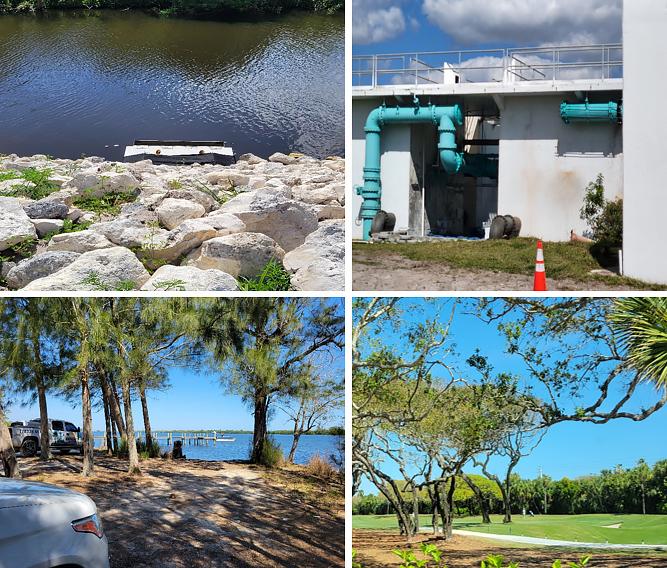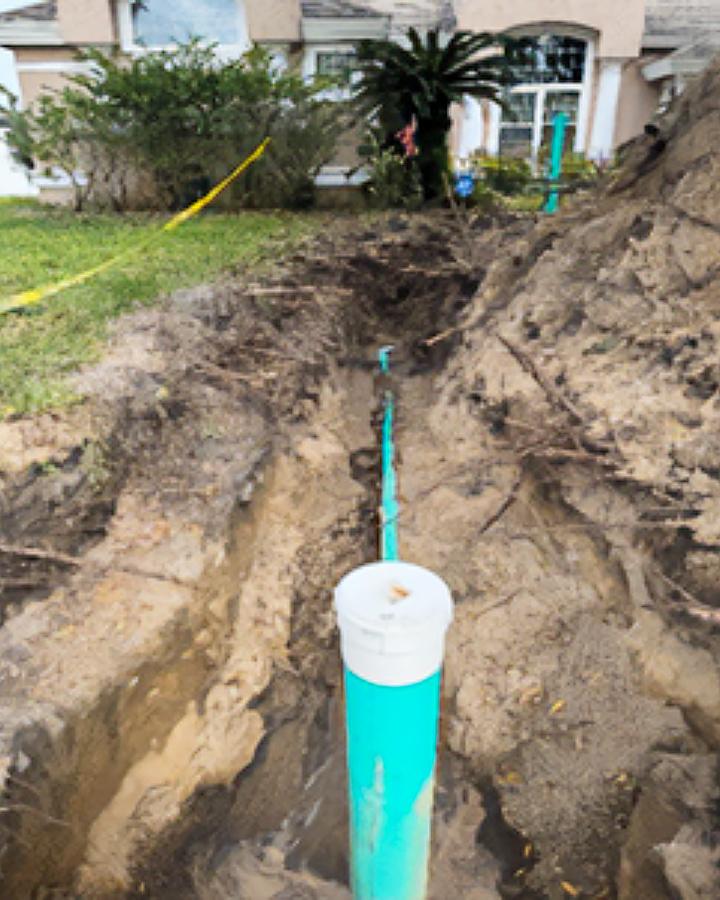PROJECTS
The St. Johns River Water Management District implements a wide variety of projects — many with partners — aimed at protecting water supplies, improving water quality and restoring natural systems, as well as providing flood protection in an 18-county jurisdiction in northeast and east-central Florida.
The projects described on this page — undertaken to fulfill its core missions — are broken into district-led restoration and construction projects, and districtwide and agricultural cost-share projects.
Black Creek Water Resource Development project
Updated on 6-17-2025
The primary goal of the Black Creek Water Resource Development Project is to increase recharge to the Upper Floridan aquifer in northeast Florida using excess flow from Black Creek, in Clay County.
The project is among several identified in the North Florida Regional Water Supply Plan (NFRWSP) to help meet future water supply demands while protecting natural resources. This project, which will be built in southwest Clay County between Penney Farms and Camp Blanding, focuses on providing recharge to the Upper Floridan aquifer in the Keystone Heights region and Lower Santa Fe basin.
The project will divert up to 10 million gallons per day from the South Fork of Black Creek during wet weather high flow periods. Diversions will only be made when there is sufficient flow available to ensure the protection of natural resources within the creek. The water will be pumped through a transmission system before being treated for color and nutrients prior to discharge into Alligator Creek. Alligator Creek flows into Lake Brooklyn, which will increase recharge to the Upper Floridan aquifer through the lake bottom.
The project is also expected to contribute to regional minimum flows and levels (MFLs) recovery and may help improve water levels in lakes and the Alligator Creek system, including drought-stressed lakes Brooklyn and Geneva. Restoration of the lakes is a secondary benefit of the project.
The current cost estimate for the construction of the system, including the pump station, pipeline and treatment system, is approximately $100 million. Funding for the project was provided in the St. Johns River and Keystone Heights Lake Region Projects legislative appropriations over three years beginning in 2017. The total appropriation was more than $48 million, of which nearly $43.4 million was allocated to the Black Creek project. Additionally, north Florida utilities are contributing $19.2 million toward the project. Those utilities include Clay County Utility Authority, Gainesville Regional Utilities, St. Johns County Utilities, and JEA. The remaining balance will be provided from District funds. The appropriation was championed by Sen. Rob Bradley of Fleming Island (who currently serves as the District’s Governing Board Chairman), Rep. Bobby Payne of Palatka, and Rep. Travis Cummings from Orange Park.
Members of the Save Our Lakes Organization celebrate with District Governing Board Chair Rob Bradley and Executive Director Mike Register at an Oct. 21, 2022, construction kickoff event.
Frequently asked questions
We are committed to keeping the public informed as the project progresses. To be added to the project information distribution list, please email contactus@sjrwmd.com with the subject line Black Creek.
How will the project impact salinity concentrations in Black Creek?
Potential salinity changes would be the equivalent of 1/16th of a teaspoon in a gallon of water.
These small changes in salinity would result in unnoticeable shifts in wetland communities both in Black Creek and the St. Johns River.
The point at which saltwater meets freshwater potentially could move by up to 250 feet as a result of this project, which is equivalent to less than the length of a football field.
Will the project reduce the flow of water in Black Creek?
Not significantly. In fact, at low flows, or approximately 25 percent of the time, there will be no withdrawals from Black Creek in order to be protective of the natural systems in the Creek.
When flow levels are average or above average, no more than 10 million gallons a day will be diverted for aquifer recharge. That’s no more than 4% of the total flow in Black Creek.
The maximum pumping of 10 million gallons a day will have little to no impact on the environment, according to a preliminary environmental assessment.
What is the project’s effect on Black Creek’s water quality?
This project will have little to no impact on water quality.
Water quality in Black Creek is generally good and this project will not change that.
What studies have been conducted to guide the project and reassure the public?
The District conducted a preliminary assessment that shows that the proposed quantity of surface water may be safely diverted from Black Creek with little to no environmental effects. You can find the Black Creek Water Resource Development Assessment report above.
A detailed alternative treatment analysis to reduce color in the Black Creek water to match the water in Lake Brooklyn was conducted. This analysis looked at potential treatment alternatives using several technologies, including coagulation, oxidation, adsorption, ion exchange, membranes, and biological processes. Over 30 treatment alternatives were evaluated based on their ability to treat for color as well as other concerns such as general capital costs, residuals management, storage of chemicals, and footprint and accessibility required for construction and operation. The analysis concluded a passive treatment system met the color reduction levels required, is the most cost effective, will blend in well with the natural environment at Camp Blanding and will minimize any accessibility concerns on base.
Additional evaluations will occur as permitting, design and engineering move forward.
Has pumping already begun at Black Creek?
Yes, while additional cells of the treatment system are completed, intermittent pumping has occurred for testing purposes using the completed treatment cells.
Are there concerns that EZ Base could contaminate the project site or Black Creek itself?
No, the area where EZ Base concerns exist near Camp Blanding are not geographically near the Black Creek Project application site or recharge areas.
For additional information about EZ Base, please reach out to the Department of Environmental Protection’s Northeast District Ombudsman, Russell Simpson, at 904-256-1653.
How is this project beneficial and to whom?
The project is among several identified in the 2017 NFRWSP to help meet future water supply demands across the region while protecting natural resources.
The project will recharge the Upper Floridan aquifer in northeast Florida, helping to sustain or recover established MFLs in the region while also benefitting water users.
While the project may help improve water levels in lakes in Keystone Heights and throughout the Alligator Creek system, including drought-stressed lakes Brooklyn and Geneva, its purpose is to recharge the Upper Floridan aquifer and is expected to benefit MFLs in the region.
When did the public learn about this project?
This project has been discussed broadly with the public since May 2013.
The Black Creek project is part of the 2017 NFRWSP, which was developed through a highly collaborative process among the Suwannee River and St. Johns River water management districts and FDEP, local governments, public supply utilities, environmental advocates and other stakeholders.
Over four years, the NFRWSP planning process included 36 Stakeholder Advisory Committee meetings, more than 50 other stakeholder meetings and two public workshops to engage stakeholders to understand their individual perspectives as related to water resource issues in north Florida.
The District will continue to provide project updates on this webpage as the project progresses to keep the public informed.
How are you keeping the public informed about the Black Creek project?
This webpage is dedicated to the Black Creek Project. We also continue to share project progress and updates through our District Facebook and Twitter pages, @sjrwmd.
Achieved milestones
- August 2023 – District Governing Board approves contract to construct treatment system
- September 2022 — District Governing Board approves contract to construct pipeline
- July 2022 — District Governing Board approves contract to begin construction of the intake and pump station
- May 2022 — U.S. Army Corps of Engineers (USACE) 404 permit issued
- February 2022 — Florida Department of Environmental Protection (FDEP) NPDES permit issued
- March 2022 — FDEP Individual Environmental Resource permit issued
- January 2021 — Pilot study initiated of passive treatment system
- December 2020 — Evaluation of treatment alternatives completed
- October 2018 — Florida Department of Transportation permit issued
- June 2018 — Application submitted to USACE
- 2018 — Completed topographic survey, geotechnical report, archeological study, endangered species report and acquired land and easements for the project
Project schedule
July 2017
District Governing Board approved the design contractor ranking, authorization of final contract execution and associated budget transfers
FY 2018
- Design and engineering
- Land acquisition
FY 2019
- Permitting
FY 2020
- Evaluation of treatment alternatives
- Permitting
FY 2021
- Pilot study for source water (Black Creek) treatability
- Design completion
- Submit permit application
FY 2022
- Finalize permitting
- Pump station and pipeline construction bid
- Begin construction of pump station
FY 2023
- Begin construction of pipeline
- Treatment area construction bid
FY 2024
- Begin construction of treatment system
FY 2025
- Initial operation of pump station, pipeline and treatment system
Crane Creek / M-1 Canal flow restoration project
Updated on 2-4-2025
The M-1 Canal is a 100-year-old, man-made flood control feature in Brevard County that cuts through the historic drainage divide between the St. Johns River and the Indian River Lagoon.
The M-1 Canal diverts stormwater flow from 5,300 acres of drainage area in Melbourne, West Melbourne, Melbourne Village and portions of unincorporated Brevard County and sends the water east to the Indian River Lagoon via Crane Creek. Nutrients within runoff from this currently diverted watershed degrade water quality in the Indian River Lagoon and provide fuel for algal blooms.
The Crane Creek / M-1 Canal Project — identified in the 2017 Indian River Lagoon Stormwater Capture and Treatment Feasibility Analysis and led by the St. Johns River Water Management District — will substantially reduce nutrient loading to the Indian River Lagoon. Construction of the project will result in restoring the baseflow in the M-1 Canal westward for treatment in a constructed stormwater treatment area prior to discharging to the St. Johns River Basin.
Project components include an operable weir east of Evans Road, two pump stations, two pipeline force mains and a stormwater treatment area west of Interstate 95. The operable weir – which allows capture of runoff for the east pump station – is engineered to have no impact on the existing flood control capability of the M-1 Canal.
This project reduces nutrient loadings to the Indian River Lagoon while also providing an alternative water supply source to downstream users by restoring 7 million gallons of freshwater flow per day to the St. Johns River.
Nutrient load reduction estimates to the Indian River Lagoon are:
- Total nitrogen 24,000 lb./yr.
- Total phosphorus 3,100 lb./yr.
Project schedule
July 2017
- Engineering design start
FY 2018
- Hydraulic and hydrologic modeling
- Engineering design
- Land acquisition
FY 2019–2022
- Completion of land acquisition
- Engineering design
- Permitting
FY 2023–2025
- Construction
Project milestones
- Hydraulic and hydrologic modeling is completed
- Design is completed
- Governing Board approved execution of construction contract (January 2023)
- Construction has begun
Project partners
- Brevard County ($2.03 million funding contribution)
- Florida Department of Environmental Protection ($2.45 million funding contribution)
- Federal sources administered through Florida Department of Environmental Protection ($4.5 million funding contribution)
- St. Johns River Water Management District (approx. $14–15 million)
- Contact: cranecreekproject@sjrwmd.com
FAQs
When is the project slated to begin and when will it be completed?
The construction phase of this project is scheduled to begin in spring 2023. The anticipated completion date is April 2025.
Reversing some of the flow in M-1 Canal and sending stormwater west to the St. Johns River will help the Indian River Lagoon, but how will the stormwater be cleaned before it reaches the St. Johns River?
Water from the M-1 Canal will be pumped under Interstate 95 and Heritage Parkway to a stormwater treatment area (STA). The STA provides treatment for the water which is then pumped into a pipeline that will be constructed along the Heritage Parkway and the U.S. Highway 192 corridor. The pipeline will discharge to District-owned marsh land adjacent to the St. Johns River, and ultimately the St. Johns River.
Will construction impact local traffic, especially in nearby neighborhoods?
Construction of this project will have no impact on local traffic.
Will the installation of the weir at the M-1 Canal contribute to flooding in nearby neighborhoods already prone to flooding during storm events?
This project will have no adverse impact on the existing stormwater system. Flood protection is a priority and has been carefully analyzed and modeled. The system is designed so that the proposed weir can be lowered (open position) in the event of a major oncoming rainfall event (such as a hurricane or tropical storm). Redundant automatic sensors in the canal will also lower the weirs if the water in the canal reaches certain elevations. The system is continually monitored by operations staff to ensure it is functioning properly. Additional analysis has been performed to ensure that even if the weir is left in the up position, flood protections will remain unchanged. This is possible because the M-1 Canal will be widened over the weir to maintain current flow capacity.
Does the additional water benefit the river?
The additional water will benefit the St. Johns River by restoring historic baseflow from the watershed that was diverted from the St. Johns River to the Indian River Lagoon.
Who do I call or email if I have additional questions?
If you have questions about this project, please email cranecreekproject@sjrwmd.com or call Marc Van Heden at 321-676-6604.
C-10 Water Management Area project
Updated on 3-14-2025
The C-10 Water Management Area (WMA) is planned as part of the work of the St. Johns River Water Management District in the Upper St. Johns River Basin to help improve water quality in the Indian River Lagoon.
The C-10 WMA is a proposed 1,300-acre surface water management system located at the west end of Malabar Road, north of the District’s Three Forks Marsh Conservation Area, and south of Sawgrass Lakes Water Management Area in Brevard County.
The purpose of the project is to reduce the amount of nutrient loading to the Indian River Lagoon, restore historic surface water flows back west to the St. Johns River, increase flood protection, and improve resiliency. The project will provide water quality and alternative water supply benefits. As an ancillary benefit, C-10 WMA will further support the community by making additional public recreational opportunities available in Brevard County, similar to those found on existing District lands such as Three Forks Marsh Conservation Area and Sawgrass Lake WMA, which are adjacent to the proposed C-10 WMA.
The C-10 WMA will improve water quality in the Indian River Lagoon similar to the District’s completed Canal 1 (C-1)/Sawgrass Lake Water Management Area project. For almost a century, the C-1 Canal shunted stormwater away from its natural destination, the St. Johns River, and instead directed it to the Indian River Lagoon, impacting the estuarine environment with nutrients, sediments and unnatural volumes of freshwater. The multi-phase C-1/Sawgrass Lake Water Management Area Project restored a portion of these flows back to the St. Johns River, after being naturally filtered to remove nitrogen and phosphorus. Natural filtration occurs though the 2,000-acre Sawgrass Lake WMA. That project has operated since 2015 and reduces nutrient loading to the Indian River Lagoon by an estimated 148,000 lbs./year total nitrogen (TN) and 13,000 lbs./year total phosphorus (TP). If the C-10 WMA is constructed, it is estimated to further reduce nutrient loading to the Indian River Lagoon by an additional 29,300 lbs./year TN and 1,300 lbs./year TP.
The Florida Department of Environmental Protection is providing $20 million in resiliency funding toward project construction. The Brevard County Board of County Commissioners approved the 2024 Save Our Indian River Lagoon (SOIRL) project plan, which includes $10.46 million in grant funds for C-10 WMA.
Doctors Lake restoration projects
Updated on 10-30-2024
Located in Clay County adjacent to the west bank of the St. Johns River, the Doctors Lake Basin covers approximately 23 square miles. The basin’s former agricultural and forested lands now support medium and high-density residential areas and commercial properties.
Doctors Lake has experienced water quality issues due to nutrient loading from stormwater runoff and other non-point sources such as septic tank effluent. Because of its narrow connection with the St. Johns River, the 3,400-acre lake has poor circulation and nutrients tend to concentrate in the lake.
Contributing nutrient-loading factors include:
- Basin population of 35,000 (2000 Census)
- 12,000-plus housing units
- 847 units on septic tanks
During the 2018 legislative session, then-Sen. Rob Bradley, R-Fleming Island, Senate Budget Chairman, and Rep Travis Cummings, R-Orange Park, secured specific funding during the budget process for the St. Johns River to implement water resources projects that will help improve water quality in the St. Johns River, its tributaries and the Keystone Heights Lake Region, as well as improving public access and recreation projects within the St. Johns River Water Management District.
With then-Gov. Rick Scott’s support and approval of the budget, the St. Johns River Water Management District, Clay County and Clay County Utility Authority (CCUA) partnered to identify potential projects in the area.
Identified projects and status are:
- The Florida Department of Environmental Protection has provided an innovative technology grant to fund a contract between the District and BlueGreen US Water Technologies, Inc.(BGWT) for Harmful Algal Bloom (HAB) identification and treatment in Doctors Lake. BGWT will deploy floating sensors in the lake to report real-time bloom conditions, collect routine water quality samples and utilize an innovative remote sensing technology platform (Lake Guard View) to detect and categorize HABs. Upon detection, HABs will be treated with BGWT’s proprietary, hydrogen peroxide based algaecide, Lake Guard Oxy. (For additional information, see BGWT’s project update page at bluegreenwatertech.com.)
- The Doctors Lake Enhanced Effluent Treatment Project is an innovative technology project currently removing phosphorus from wastewater effluent. The project is capable of treating an estimated 1.6 million gallons per day on an annual average basis. This project has removed over 7,400 pounds of total phosphorus (through September 2024) since starting operation. The project continues to operate with excellent water quality results.
- Another project on Doctors Lake extended the CCUA wastewater infrastructure and connected lakeside neighborhoods currently on residential septic systems to the wastewater system. Total nitrogen is being reduced by an estimated 900 pounds per year through the connection of approximately 60 homes to central sewer. The project was completed in April 2023.
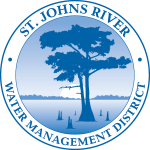
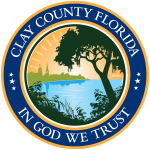

Emeralda Marsh Conservation Area 5 Peat Removal Project
Updated on 4-8-2025
The Emeralda Marsh Conservation Area (EMCA) is made up of seven wetland marsh areas. Beginning in the 1940s, the marshes were drained, and the exposed muck soils were used for row-crop agriculture and cattle grazing. Due to these agricultural practices the exposed wetland soils oxidized and subsided. The soils within the conservation area were also subject to fertilizer and pesticide applications during farming operations.
The St. Johns River Water Management District acquired the EMCA properties through the Save our Rivers and Preservation 2000 programs in the 1990s. After years of restoration efforts to address high phosphorus levels in the water within the EMCA, five of the EMCA wetland areas have been connected either directly or indirectly to Lake Griffin. The District’s goal is to reconnect Area 5 as well. Some of the benefits to reconnecting to the lake include improved hydrology, and recreational access for fishing, hunting and wildlife viewing, including the District’s EMCA wildlife drive.
The peat soils present in EMCA Area 5 have naturally high phosphorus concentrations that were enriched by past agricultural practices. Compliance with the total maximum daily load (TMDL) limitations for Lake Griffin and the high phosphorus present in EMCA Area 5 prevent reconnection to Lake Griffin. Additionally, specific water/soil conditions present in EMCA Area 5 prevent the use of traditional phosphorus control methods such as alum. Because of this, the District has considered alternative methods for phosphorus control, including peat removal.
The peat removal project was initially considered in the 2012 District Lands Assessment Implementation Plan and approved by the District Governing Board in 2013. In 2016, the District entered into a lease agreement with Sun Gro Horticulture Excavation and Processing LLC, which was amended in 2021 to reflect a name change to LJF FPS, LLC, doing business as Florida Potting Soils (FPS), to remove the peat deposits in EMCA Area 5 that contain high phosphorus levels. The goal is to lower the phosphorus levels so that EMCA Area 5 can be reconnected to Lake Griffin while complying with the TMDL. The project supports the goal of restoration for the hydrological and ecological functions of the Ocklawaha River floodplain by minimizing the nutrient discharge from the property to Lake Griffin and the Ocklawaha River Basin, as outlined in the 2016 Land Management Plan for the EMCA, which includes information on the restoration and enhancement of the property.
Project timeline
2025
- Peat removal operations ongoing
2024
- Revised invasive plant management plan
- Fourth amendment sublet construction to Reliable Peat Company
2023
- Second amended and restated lease agreement was executed
- Peat removal operations ongoing
2022
- DEP ERP General Permit re-issued for five years
- Internal levees under construction
- Peat removal and hauling began
2021
- District Governing Board approved lease amendment
- DEP 404 permit issued
2016
- Lease agreement signed
- District Governing Board approved a land management plan, which includes information on the restoration and enhancement of the property
- DEP ERP General Permit issued for five years
2013
- District Governing Board approved project bid selection and associated lease
2012
- District Governing Board approved the Lands Assessment Implementation Plan, which outlined peat removal strategy for EMCA Area 5 high phosphorus.
Frequently asked questions
What are the environmental benefits of the project?
The project supports the goal of restoration for the hydrological and ecological functions of the Ocklawaha River floodplain by minimizing the nutrient discharge from the property to Lake Griffin and the Ocklawaha River Basin.
What are the details of the lease?
The project is a multi-year lease to Florida Potting Soils (FPS) for removal of an estimated 3,400,00 cubic yards (C.Y.) of peat in Emeralda Marsh Area 5. This project is a part of the District’s overall restoration and public recreation objectives for the EMCA and removal of the specified nutrients are consistent with these objectives. The District is receiving a royalty of $0.25 for each cubic yard of peat material and/or other soil removed off the property as FPS intends to process and resell the excavated soil to consumers and other end users. See lease agreement and lease amendment.
Where does the royalty money go?
The District entered into a five-year revenue sharing agreement, with renewals in one-year increments, on Jan. 9, 2018, with Lake County to use a portion of the project revenues to fund aquatic resource conservation, restoration, or recreation improvement projects within Lake County. See Revenue sharing agreement between Lake County and District.
How will the site be managed during peat removal?
The removal of peat will be divided into five phases of operation. This is shown on FPS Emeralda Marsh proposed cell configurations. The start for peat removal from Phase 1 is anticipated in spring 2022.
Does the project have environmental permits?
The project has received general permits from the state of for an environmental resource permit (ERP) and a 404 permit from the Florida Department of Environmental Protection (DEP).
Are pesticide levels of concern?
DEP has determined that the removal and use of peat in the manner proposed complies with DEP rules or standards. See DEP peat removal and use clearance letter.
Will there be environmental monitoring during the peat removal?
Yes, FPS is required to conduct environmental monitoring and implement a Field sampling plan and Fish kill response plan.
When will the project finish?
A 10-year lease is in place until March 15, 2031, with two five-year extensions possible.
What will happen to the property when the project is complete?
The newly constructed levees will be removed, and the property will be restored and managed as a mixture of open water and wetland upon completion of each construction phase.
How are you keeping the public informed about the project?
The District has this webpage where we keep updated, timely information on the project as well as project history. We’ll continue to share project progress and updates through our District Facebook and Twitter pages, @sjrwmd. We are committed to keeping the public informed as the project progresses. For additional information or with questions, please send an email to Ombudsman@sjrwmd.com with the subject line EMCA Peat Removal.
Project-related documents
- Lease agreement
- Lease amendment
- Lease second amendment
- Lease fourth amendment
- DEP ERP general permit
- DEP 404 permit
- DEP peat removal and use clearance letter
- Revenue sharing agreement between District and Lake County
- 2012 Lands Assessment Implementation Plan
- 2016 Land Management Plan
Florida Potting Soils project-related plans and documents
Lake Apopka
Lake Apopka Informational Meeting, March 5, 2024
Any questions or comments should be directed to LakeApopkaRestoration@sjrwmd.com.
Updated on 5/16/2025
Lake Apopka, the headwaters of the Ocklawaha Chain of Lakes, has undergone a transformation over the past few decades. Since the 1980s, the District and its partners have worked to improve the lake’s water quality and habitat, achieving significant improvements.
In 1994, there was no submerged aquatic vegetation (SAV) in Lake Apopka. As a result of the District’s restoration efforts, the 2024 survey found visible native SAV around 95% of the lake’s shoreline. More importantly, District staff have observed much of the SAV flowering. Flowering is important for two reasons: first it is an indicator of good plant health, and second the seeds provide for natural expansion of this important habitat. The return and continuing expansion of SAV indicates water quality and clarity are improving. Native eelgrass is now growing out into the lake’s open water areas, another promising sign for the ecosystem’s recovery. The increase in native SAV is critical, as it was both a predicted outcome of water quality improvements and it provides critical sustainable habitat for fish and wildlife.
The lake’s improving health is not just good news for nature—it’s also great for anglers. Recent fishing tournaments in the Upper Ocklawaha River Basin Chain of Lakes, including the February 2025 Bass Pro Tour Suzuki Marine Stage 2, have included Lake Apopka as a tournament lake. Additionally, the Florida Fish and Wildlife Conservation Commission (FWC) has documented a major increase in fishing activity in the lake. Bass caught from the lake have been impressive in size and abundance, making it a popular destination for many anglers.
Restoration in Action:
The restoration of Lake Apopka has focused on a multipronged approach: a “diet” to reduce phosphorus entering the lake, “exercise” to remove phosphorus already in the water and “physical therapy” to help the lake cycle its nutrients.
Phosphorus diet:
- A significant milestone occurred in 1996 when the Legislature directed the District to purchase farms on the lake’s north shore. These lands, originally a floodplain marsh (wetlands) before being drained and diked for agricultural production in the 1940s, were a major source of phosphorus fueling algal blooms, which shaded the lake’s SAV. As the SAV disappeared, the historic bass population collapsed, as did the dozens of fish camps which once ringed the lake.
- Key to reducing phosphorus loading from the north shore was restoring the area’s wetlands to reduce the volume of phosphorus laden water pumped to the lake. Now discharges can be treated to inactivate phosphorus and in 2003 the passage of the Lake Apopka Stormwater Rule enhanced the lake’s diet to the entire watershed.
Phosphorus exercise:
- Efforts to remove phosphorus already in the lake include the annual rough fish harvest focused on gizzard shad. Harvesting of gizzard shad has been an important factor in the improvement of water quality, with typically 750,000 pounds of shad removed annually. Since 1993, the shad removal equates to more than 274,000 pounds of phosphorus removed from the lake. Click here for more information.
- The Marsh Flow-Way is a 760-acre filter marsh that continuously removes algae, suspended solids and nutrients from the lake’s water. Located in the southeast corner of the North Shore, the Marsh Flow-Way began operation in 2003 and filters about 30% of the lake’s volume each year. The stored solids are retained in the marsh’s soils and the treated, clearer water is returned to the lake. Since operation began in 2003, more than 75,000 tons of total suspended solids and 37.5 tons of total phosphorus have been removed from the lake. Click here for additional information.
Physical Therapy:
- As the water in Lake Apopka got clearer, SAV started growing again from the seedbank (seeds stored in the lake’s soil) showing that the water was clear enough to support plant life. SAV absorbs phosphorous from the water and the lake’s sediments. When there are large dense areas of SAV, they help clear the water by trapping suspended particles and stabilizing the lake bottom. The plants use the nutrients to grow, and as more plants grow, the water gets clearer, and more phosphorous is removed. The District, with FWC, Florida Department of Environmental Protection (DEP) and legislative support, began planting native SAV to accelerate the lake’s recovery of this critical habitat.
The combined effect of diet, exercise and physical therapy has led to a dramatic improvement in water quality. Since the late 1980s, phosphorus concentrations have declined 67% and water clarity increased 90% as of April 2025. In 2022, the annual average phosphorus concentration was below the target concentration for the first time. Phosphorus concentrations have generally declined over time, with occasional increases during periods of low water levels. Between 2023 and much of 2024, dry weather caused the lake to fall below its normal levels, resulting in elevated phosphorous concentrations. Rainfall from Hurricane Milton restored Lake Apopka’s water levels to within the regulated range, leading to a reduction in phosphorous concentrations.
This doesn’t mean the District’s work is done, but it is an important milestone in the lake’s recovery. The return of clearer water and the return of sunlight to the lake’s bottom triggered the regrowth of SAV, which had been missing for 50 years, and the critical bass habitat needed for recovering sportfish populations.
Ongoing projects:
- To further restrict the phosphorus diet, the District is implementing a series of projects to improve its ability to manage water on the North Shore’s recovering wetlands. The following projects will be completed by September 2025, include:
- Repairing North Shore internal levees, specifically the north slope of Roach Road and south slope of Lust Road
- Upgrading pump stations for remote operation and replacing all alum tanks and upgrading the alum pump systems at all the pumps.
- Cleaning debris and accumulated muck from North Shore’s major canals.
- Refurbishing or removing derelict farm structures from across the property.
- Clearing woody vegetation from the Sand Farm property (west of Lake Level Road for more efficient treatment of stormwater runoff.
- A Nutrient Reduction Feasibility Study will be conducted in 2025-2026 to look at potential projects to further reduce phosphorus in Lake Apopka and the Upper Ocklawaha River Basin Chain of Lakes.
- The District is expanding its physical therapy work to accelerate the recovery of native SAV in Lake Apopka by conducting additional plantings using District, FWC and legislative resources:
- Planting native floating-leaved aquatic lilies and lotus. Recently, the District planted 28,382 lilies and lotus to provide submerged habitat on more than 10 acres of the lake. This project was in partnership with the DEP. The District is considering planting more acreage of floating-leaved aquatic lilies and lotus.
Planting native SAV like eelgrass and Illinois pondweed. In coordination with our partners, DEP and FWC, 144 acres of SAV (720,000 plants of eelgrass and Illinois pondweed) have been planted in Lake Apopka since 2021. Future funding and SAV plantings are expected.
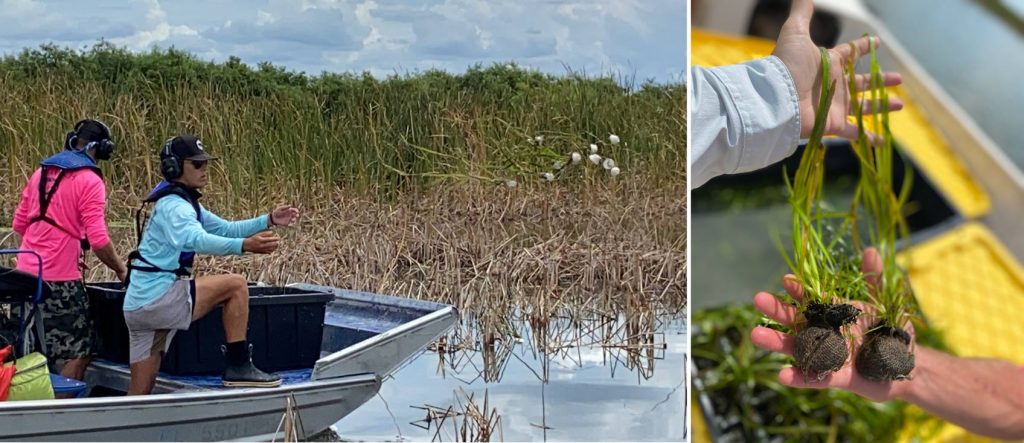
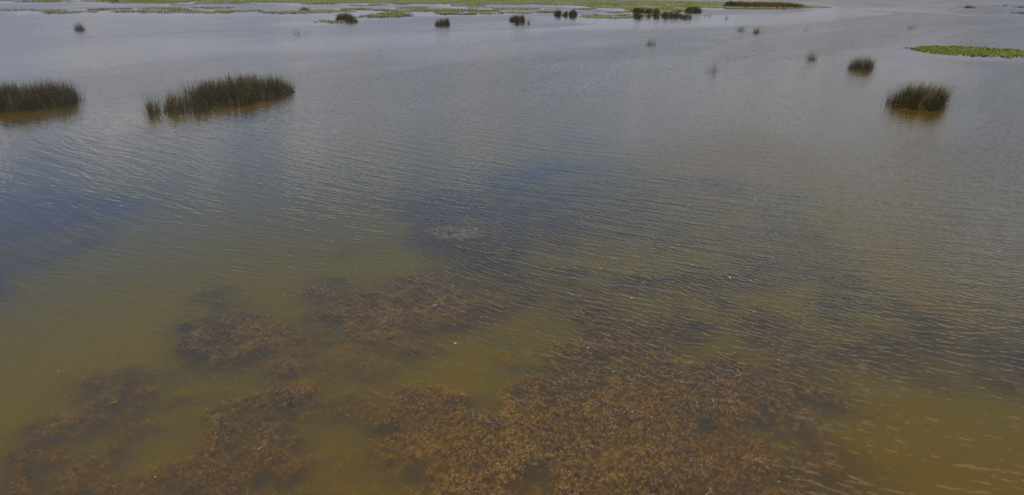
Recreation improvements:
- The District is enhancing wetland habitat and developing a new recreation area on the portion of the North Shore west of the Apopka-Beauclair Canal. This includes invasive plant treatments, and construction of a new recreation site that will allow permitted access to a dedicated parking area for users who want to launch a canoe or kayak to explore the West Marsh. The District is also working with FWC to explore potential waterfowl hunting and catch and release fishing opportunities. Expected opening for the new West Marsh access area will be in the summer of 2025.
- The District and Orange Audubon celebrated the tenth anniversary of the Lake Apopka Wildlife Drive on May 4, 2025. This milestone marks a decade of conservation and public engagement in this significant wetland restoration project. Thanks to ongoing efforts to restore the North Shore wetlands, wildlife—particularly birds—have responded with remarkable increases in both numbers and diversity. Today, the North Shore is recognized as one of Florida’s premier birding destinations, with 377 different bird species recorded on the property according to eBird, highlighting the success of habitat restoration and its importance for biodiversity.
- The District is designing a dredging project in collaboration with the city of Winter Garden on the south side of Lake Apopka near the Newton Park Boat Ramp. The project’s goal is to improve boating access from the boat ramp to deeper parts of the lake.
Ongoing challenges:
While the lake’s native SAV is flourishing, invasive Hydrilla has also expanded rapidly. The District and FWC conducted large-scale hydrilla treatments in 2023 and 2024 successfully returning the cover of this invasive species to the manageable levels it had occupied for years. Legislative support has been crucial in funding these efforts. Management efforts are focused on maintaining Hydrilla cover to low levels, which can be effectively addressed through small spot treatments.
Lake Jesup projects
Updated on 1-29-2025
Lake Jesup is a hydrologically complex system with a large, urbanized watershed and is the largest lake in Seminole County. The lake is shallow with a relatively low flushing rate that drains a 150-square-mile watershed, including portions of Oviedo, Sanford, Winter Park, Casselberry, Maitland, Longwood, Altamonte Springs, Lake Mary, Eatonville, Winter Springs and Orlando in Seminole and Orange counties.
Local stakeholder interest in restoring the lake began in 1993 with the Friends of Lake Jesup. In 2002, the District’s Governing Board designated Lake Jesup as a priority basin for restoration of water quality and fish and wildlife habitats. In 2008, in conjunction with the Lake Jesup Interagency Management Strategy, the Florida Department of Environmental Protection adopted a total maximum daily load for total phosphorus followed by the Lake Jesup Basin Management Action Plan (BMAP). As a result, progress is being made to reduce nutrient sources and concentrations to improve the lake’s water quality and clarity.
Lake Jesup Nutrient Reduction Project
Reducing the total nitrogen (TN) and total phosphorus (TP) concentrations in the water column is an important step for improving water quality in Lake Jesup. An analysis by CDM Smith in 2021 on behalf of the District determined that small footprint technologies, including media-based nutrient removal, could remove TN and TP from the water column at higher rates than a flow-through wetland system for a similar capital investment.
The goal of the Lake Jesup Nutrient Reduction project is to design, construct, and operate a nutrient removal system, using biosorption activated media-based technology, that cost-effectively removes TN and TP from Lake Jesup. The project will pump raw water from the lake, treat influent using media-based technology, and discharge water treated to state water quality criteria back to the lake. The full-scale treatment technology will be designed to remove TN and TP at rates at or above 50,000 and 5,000 pounds/year, respectively. The project location is a 9.7-acre upland property on the larger District-owned Lake Jesup east tract (see figure).
Design of the full-scale nutrient removal system began in January 2024. Part of the design work will be a pilot-scale study to evaluate the best media-based technology.
Project costs
- Total construction: $20–25 million
- Engineering: $1.1 million
- Operation and maintenance: $250,000–$400,000/year
Benefits
- Estimated total phosphorus reduction: 2,800 lbs./yr.
- Estimated total nitrogen reduction: 23,800 lbs./yr.
- Estimated increase in area suitable for submerged aquatic vegetation: 200–500 acres
Project schedule
- FY 2024–2025: Initiate design and permitting
- FY 2025–2026: Ongoing design and permitting
- FY 2026–2027: Complete design and permitting
- FY 2027–2028: Bidding and construction (contingent on funding)
Lake Jesup intact cellular algae harvesting with simultaneous nutrient export
- This pilot project, conducted by AECOM, deployed a mobile algal harvesting unit that removed nitrogen and phosphorus through direct removal of the entire algae cell (known as intact cellular algae) and suspended solids located within the upper 12-inches of the water column in Lake Jesup. An innovative air flotation technology was utilized to attach microscopic air bubbles to the algae and sediment floc, creating buoyancy, to allow efficient separation of algal biomass and clarified water. Clarified water was returned to the lake while algal biomass were managed at Seminole County’s Yankee Lake Wastewater Treatment Plant. The harvesting unit was mounted on a barge and transported around Lake Jesup so that algae could be harvested at various locations.
- The pilot project received $1.7 million, in 2020, through a Florida Department of Environmental Protection Harmful Algal Bloom Innovate Technology Project Grant solicitation requesting proposals from government entities to prevent, detect, cleanup, or otherwise address harmful algal blooms in Florida’s waterways. This was a direct result of the 2019 Blue-Green Algae Task Force, formed by Gov. Ron DeSantis.
- AECOM periodically operated the algae harvesting system over a nine-month period and completed system operations in May 2022. System decommissioning and removal from Lake Jesup was completed in November 2022. The objective of this pilot project was to collect representative data to evaluate system efficiency and the cost effectiveness of a full-scale system that can help achieve the Lake Jesup Total Maximum Daily Load and Basin Management Action Plan goals.
- See final report here.


